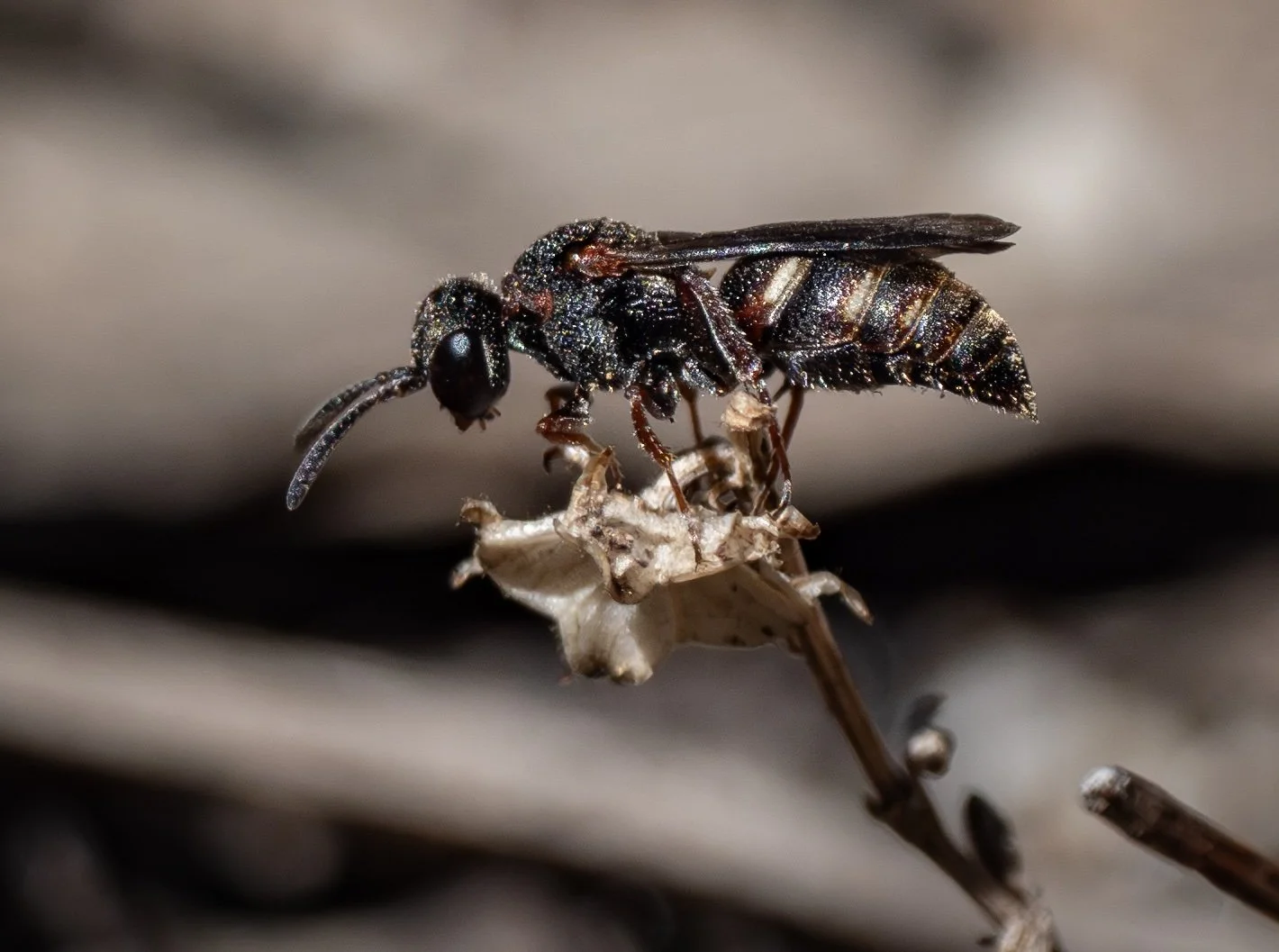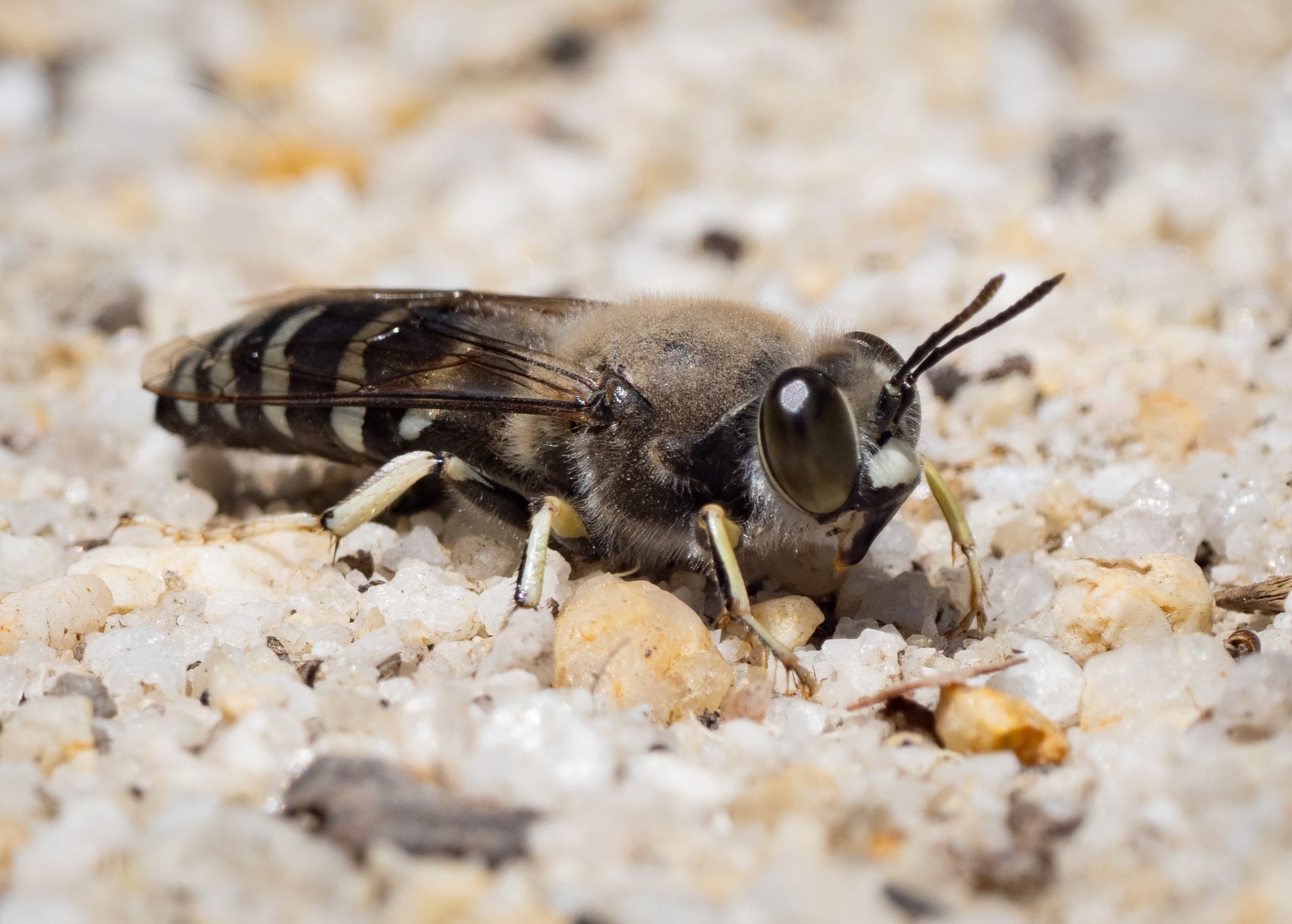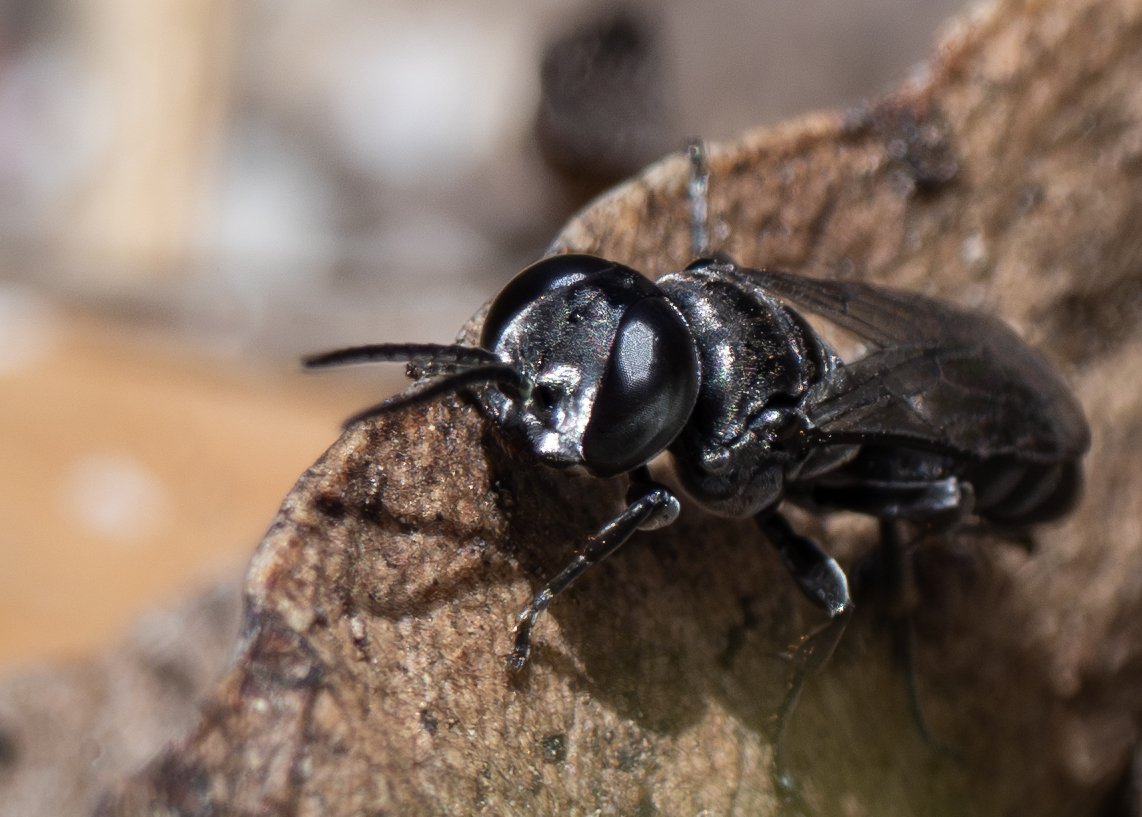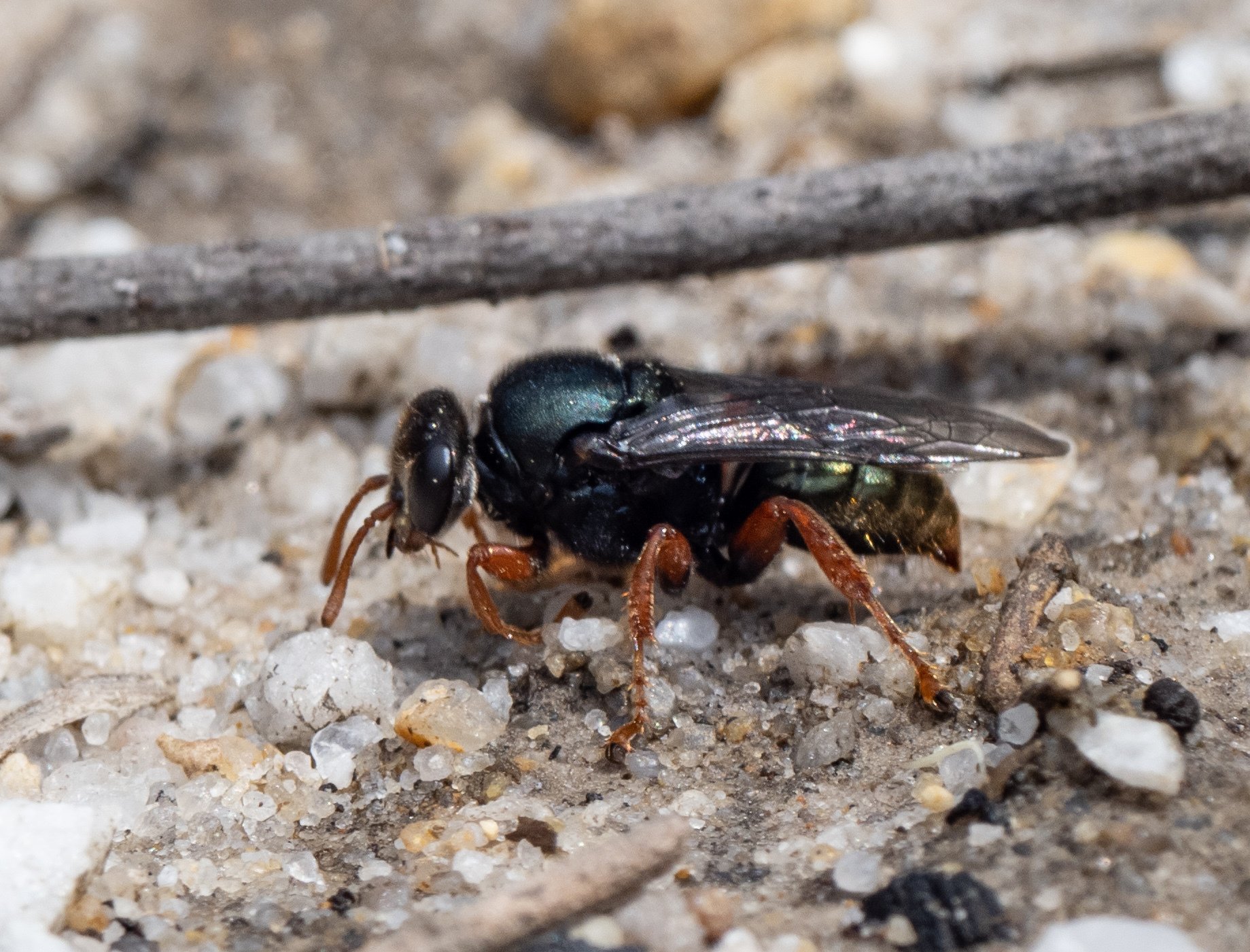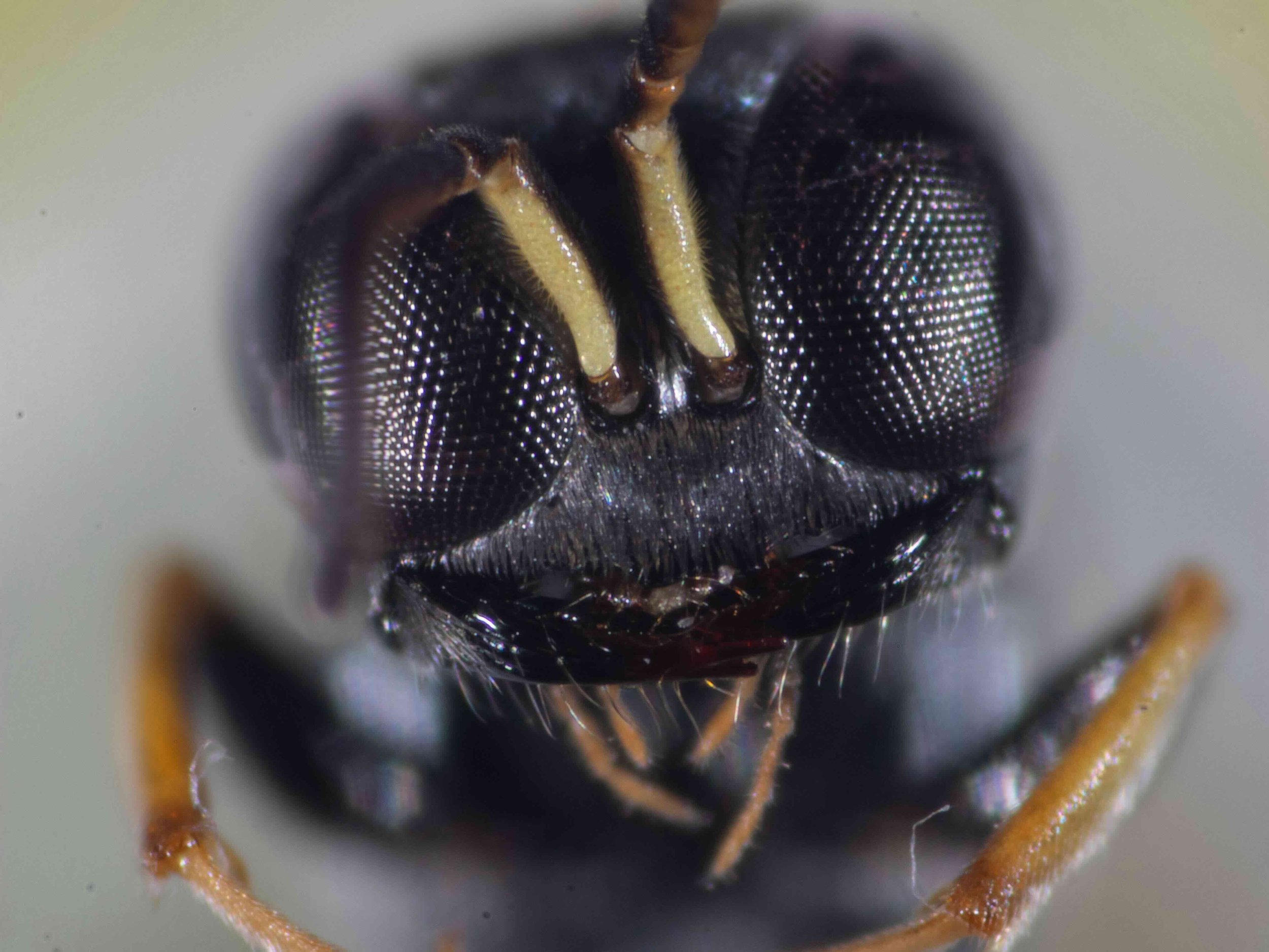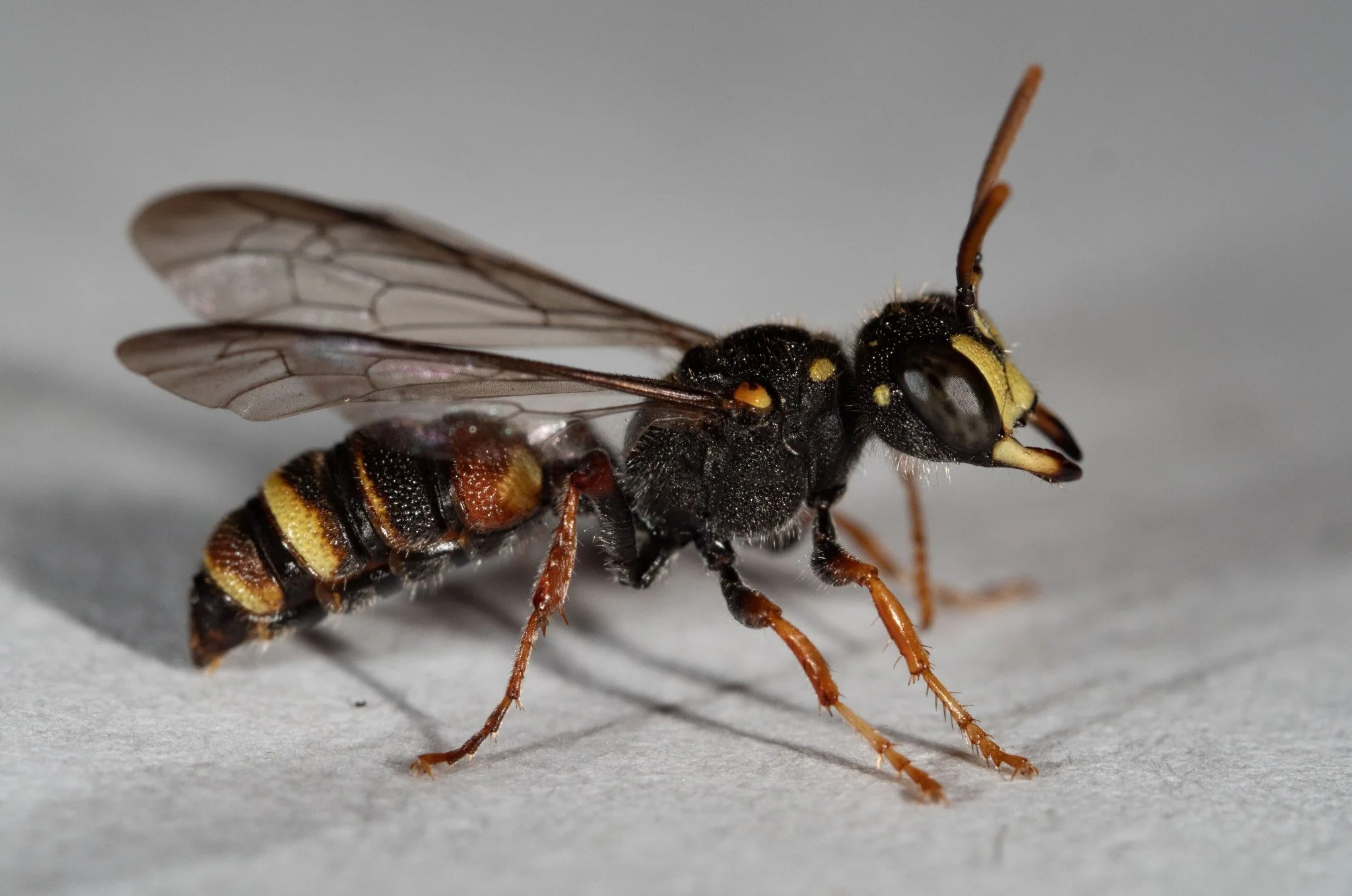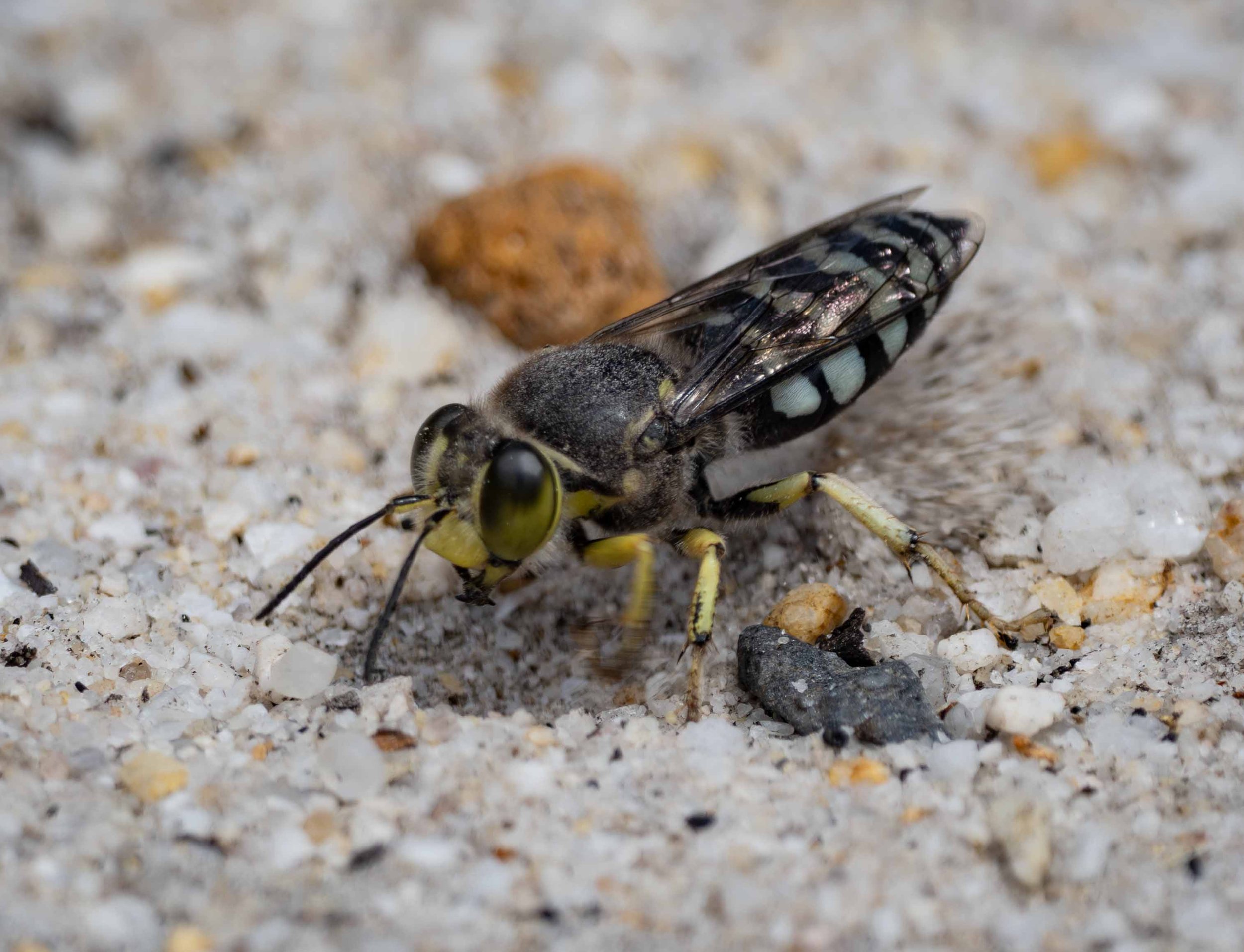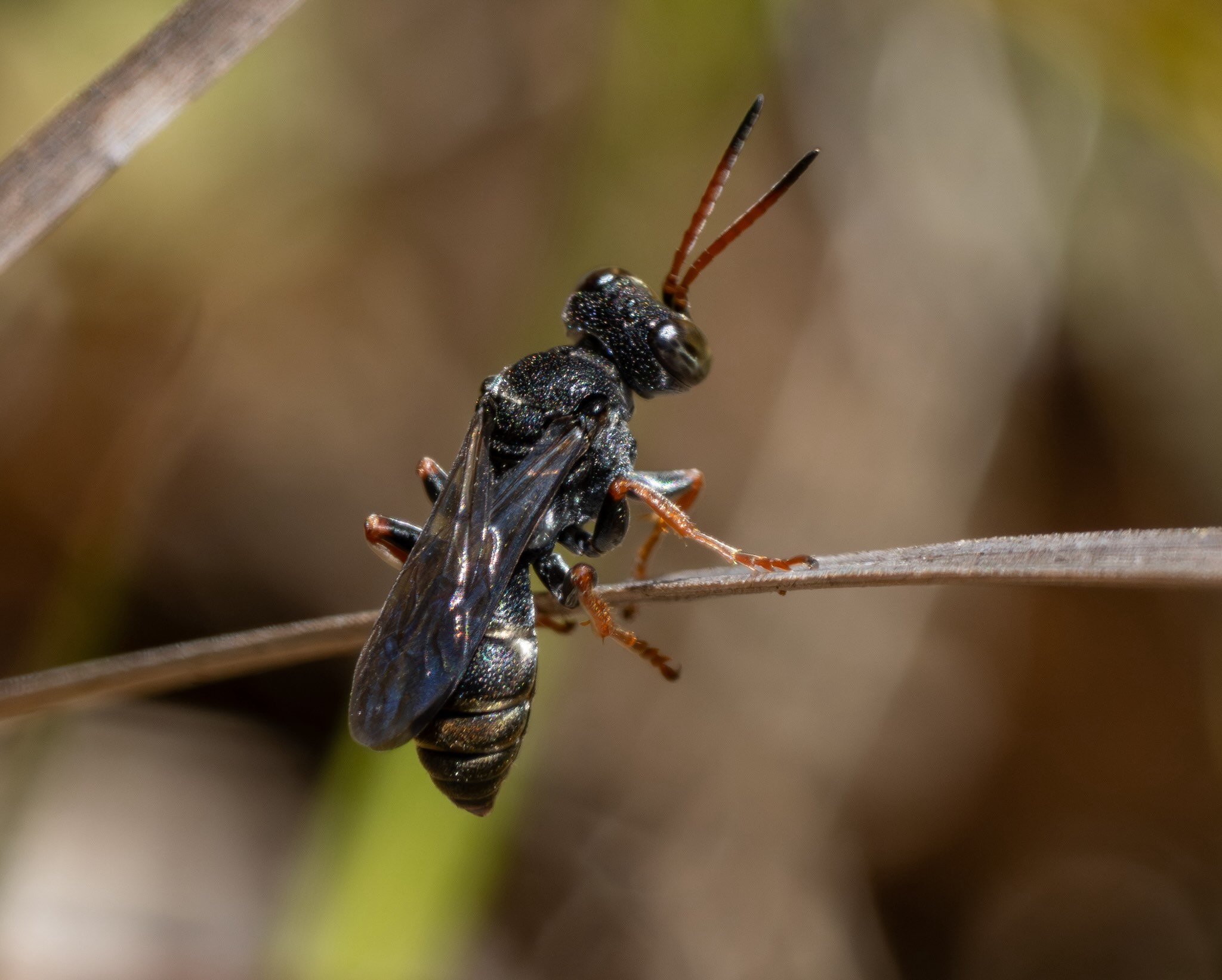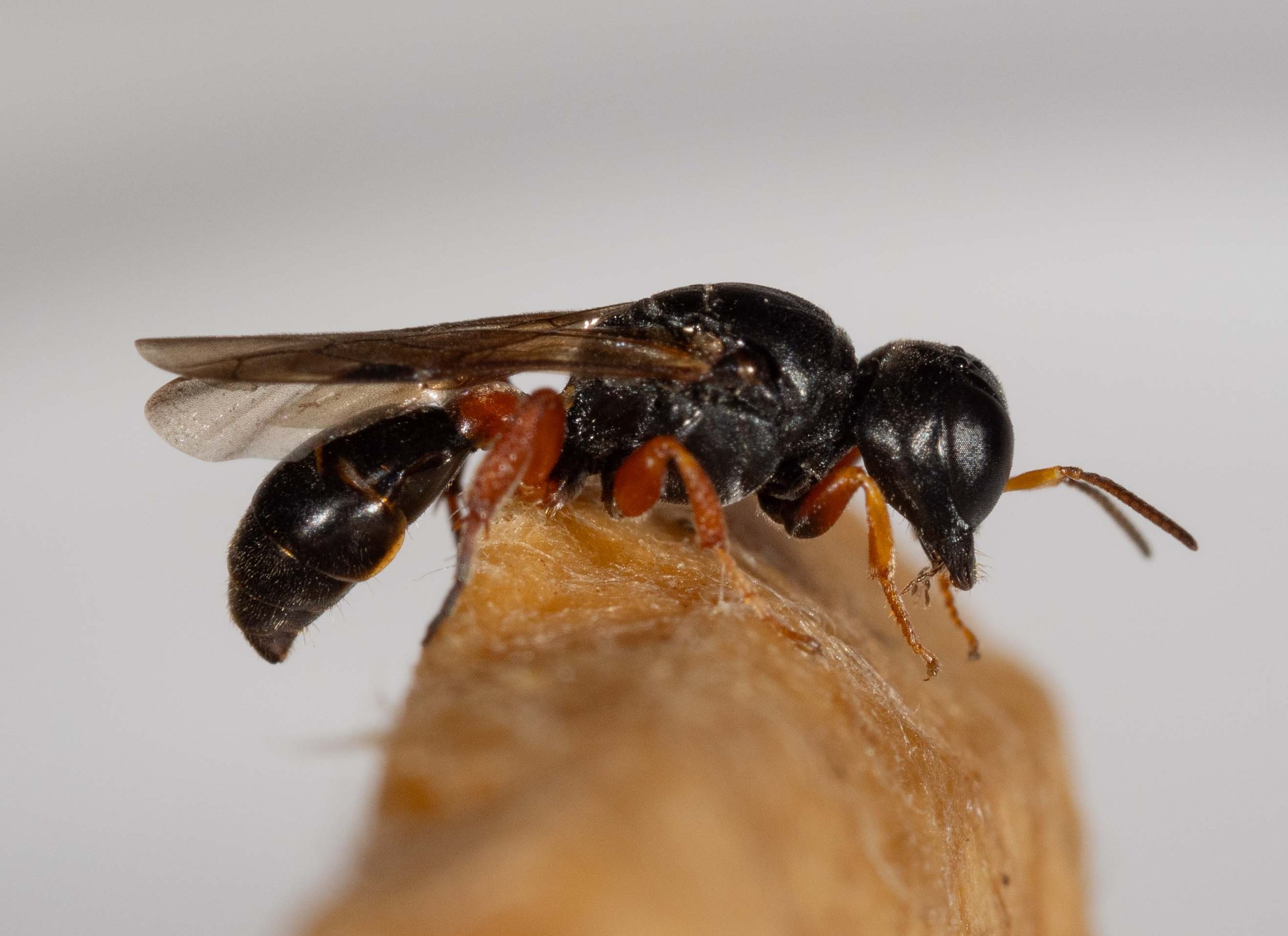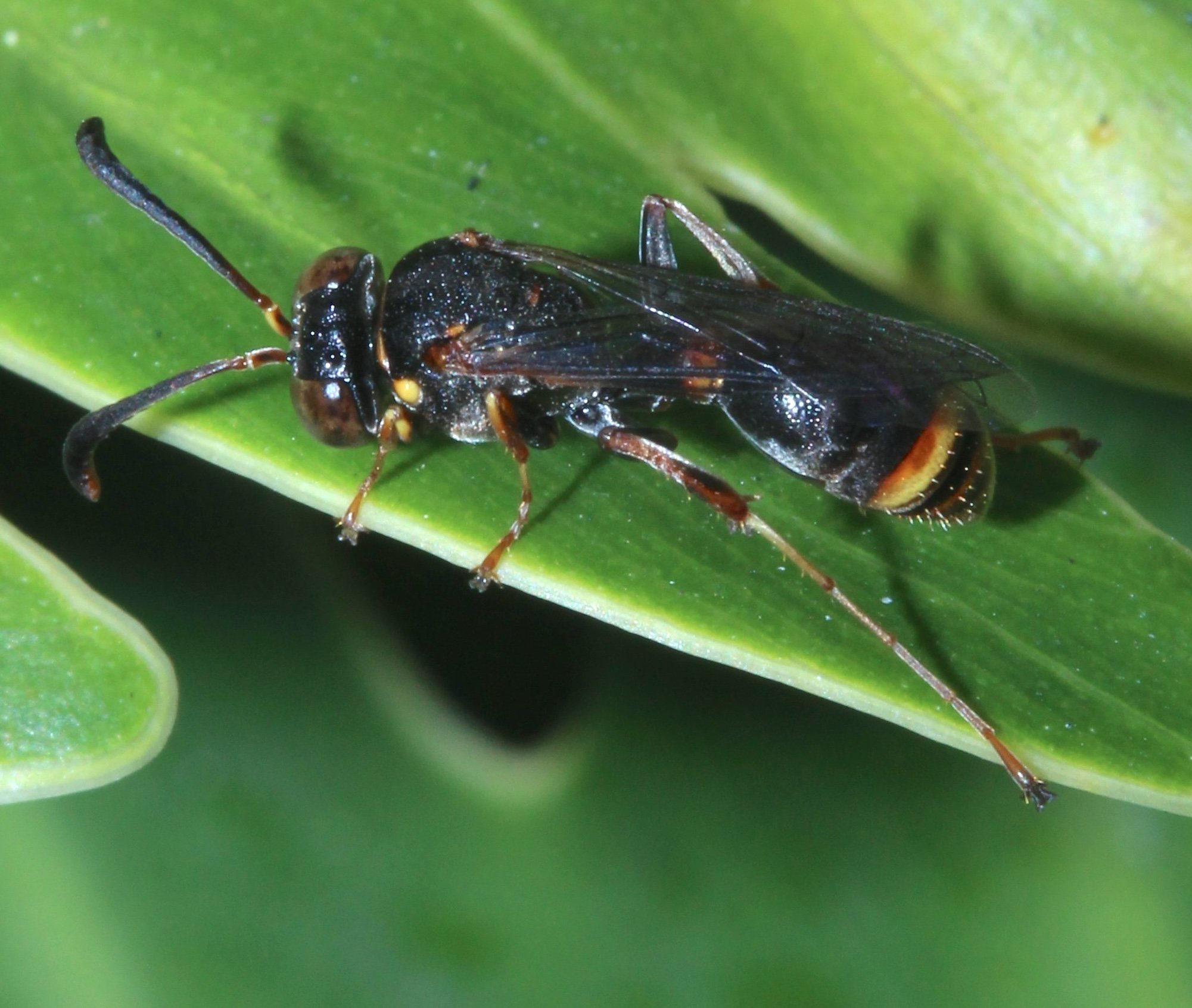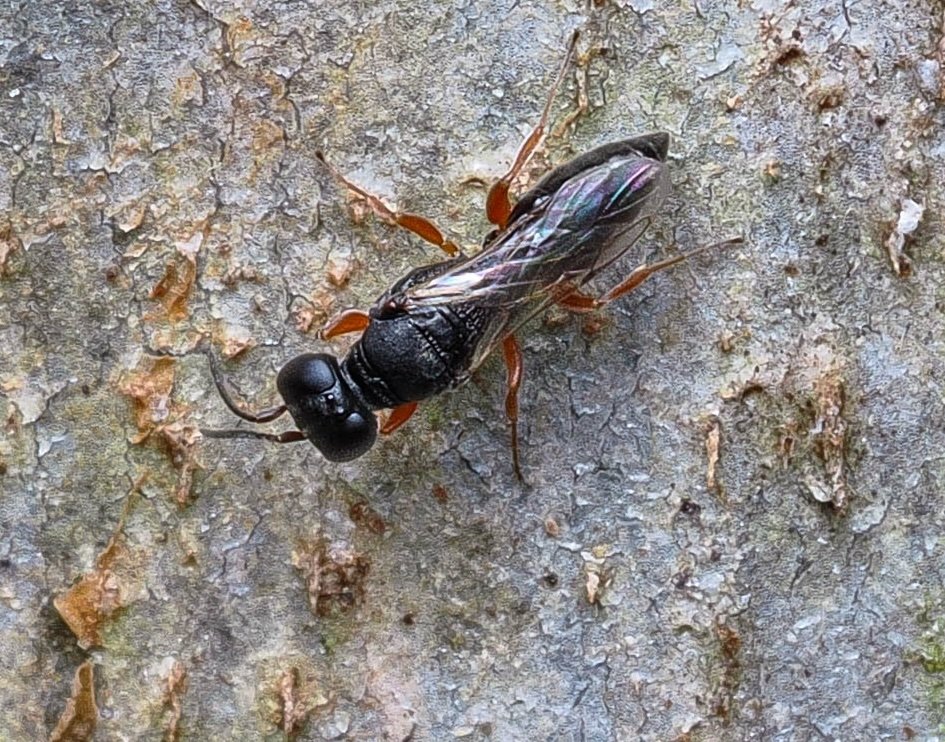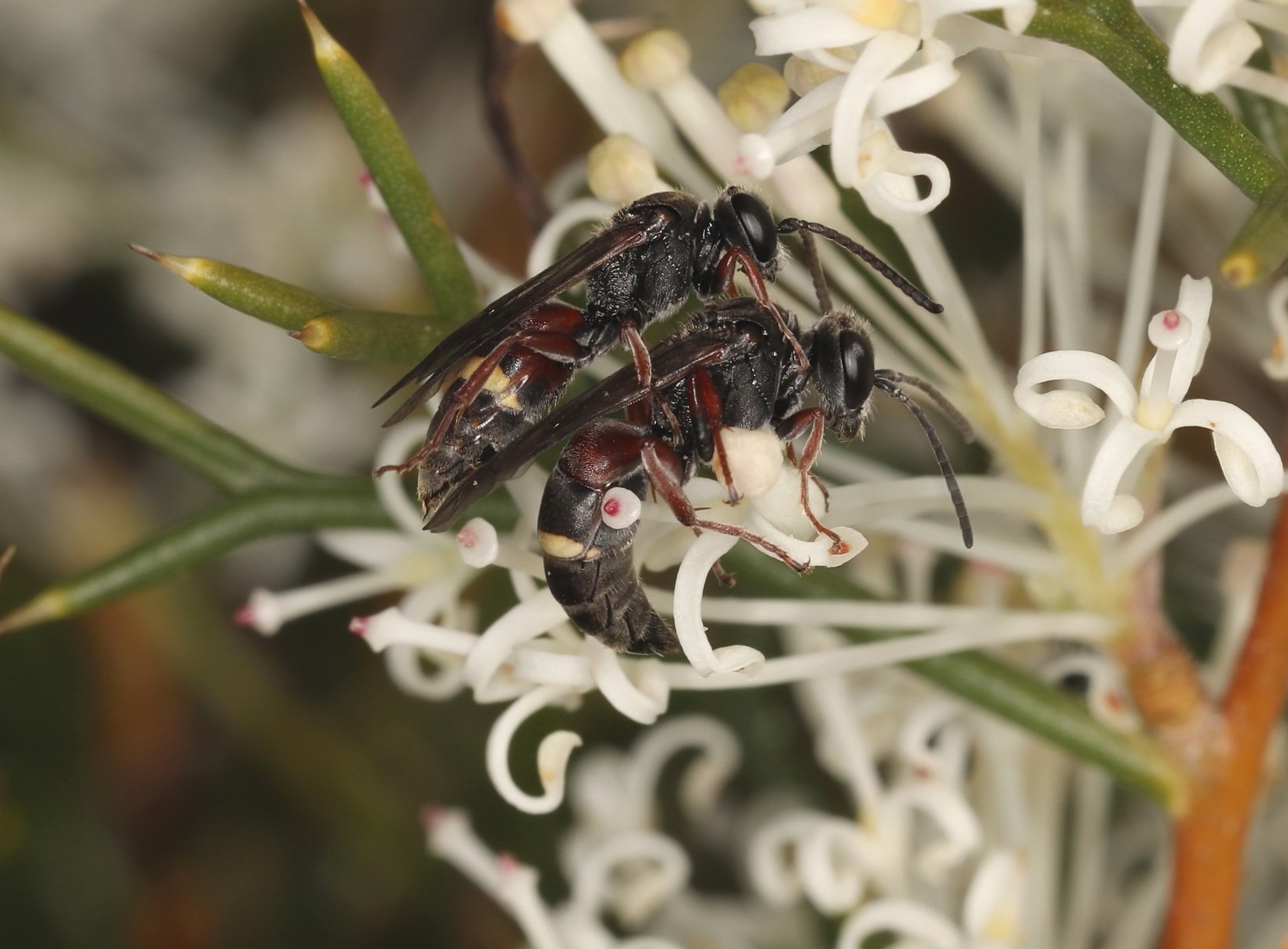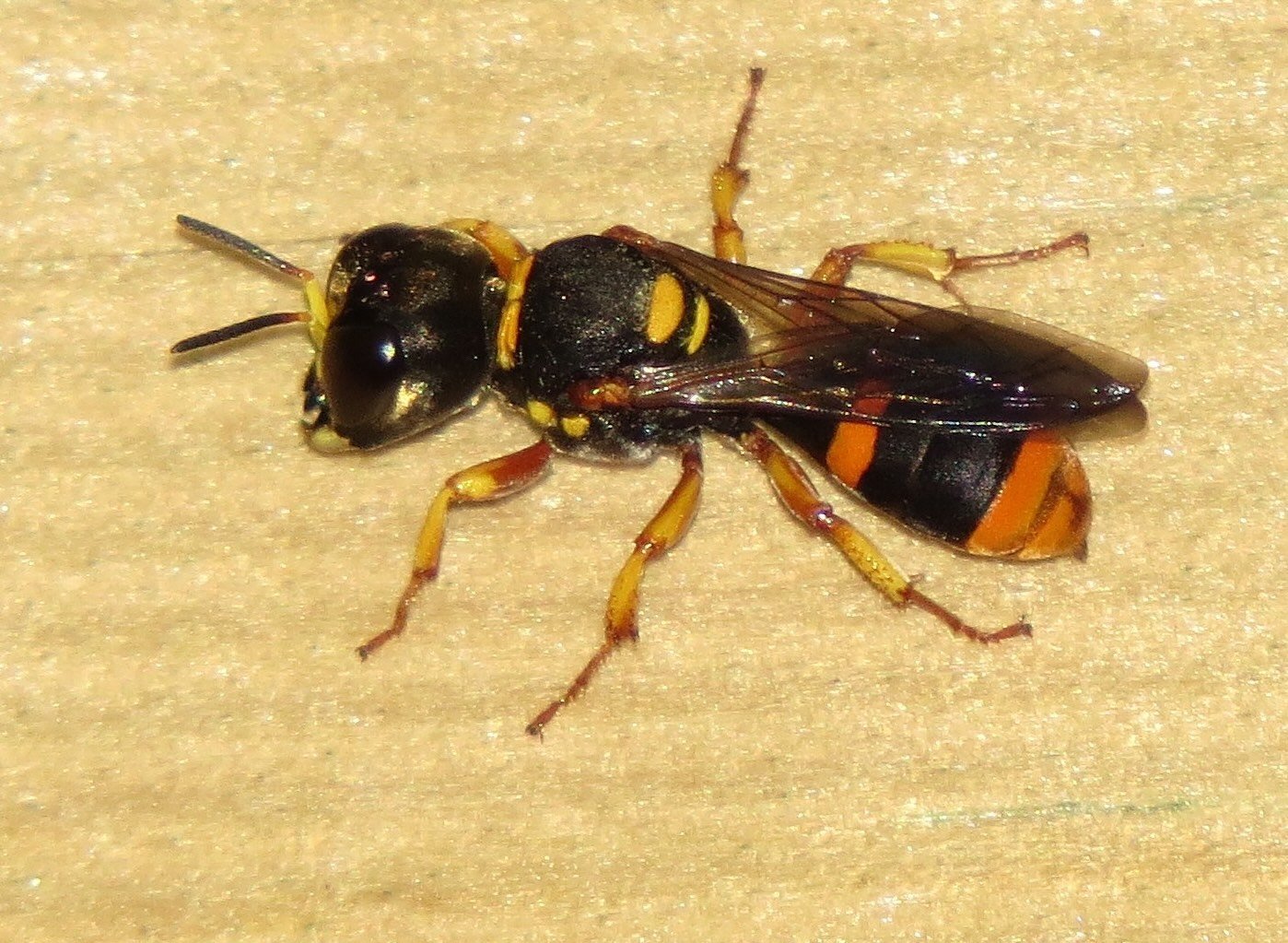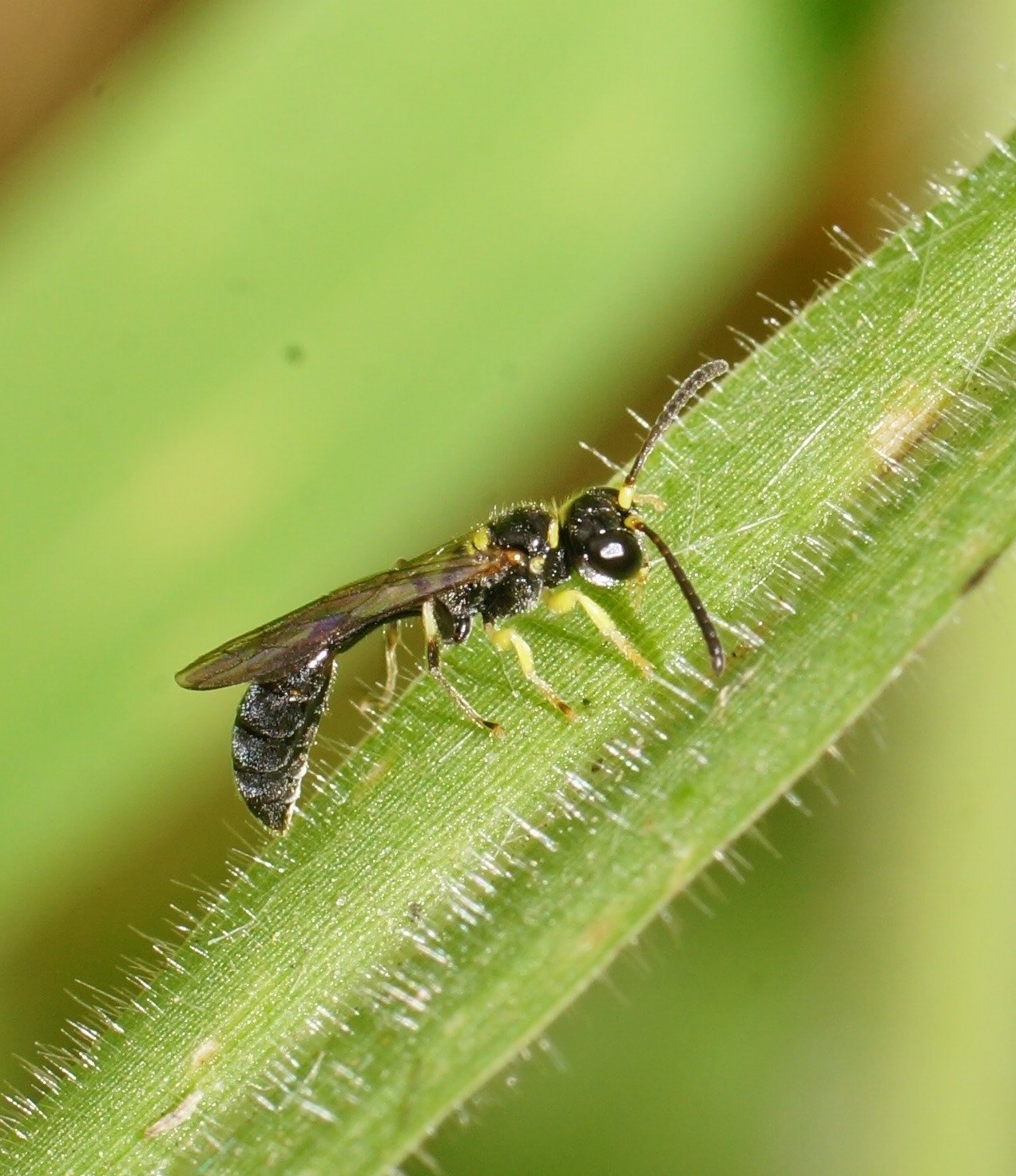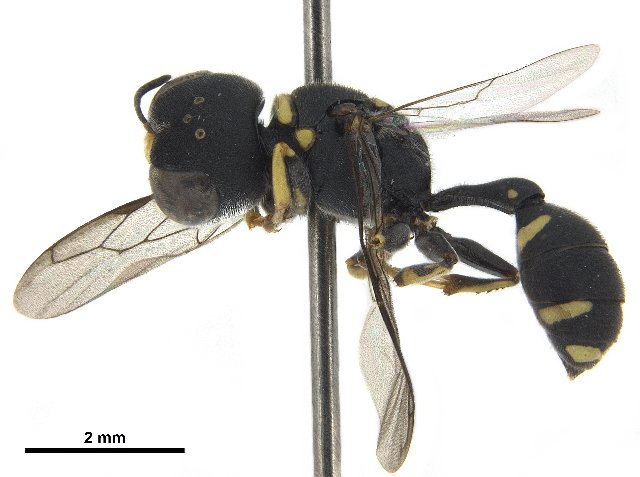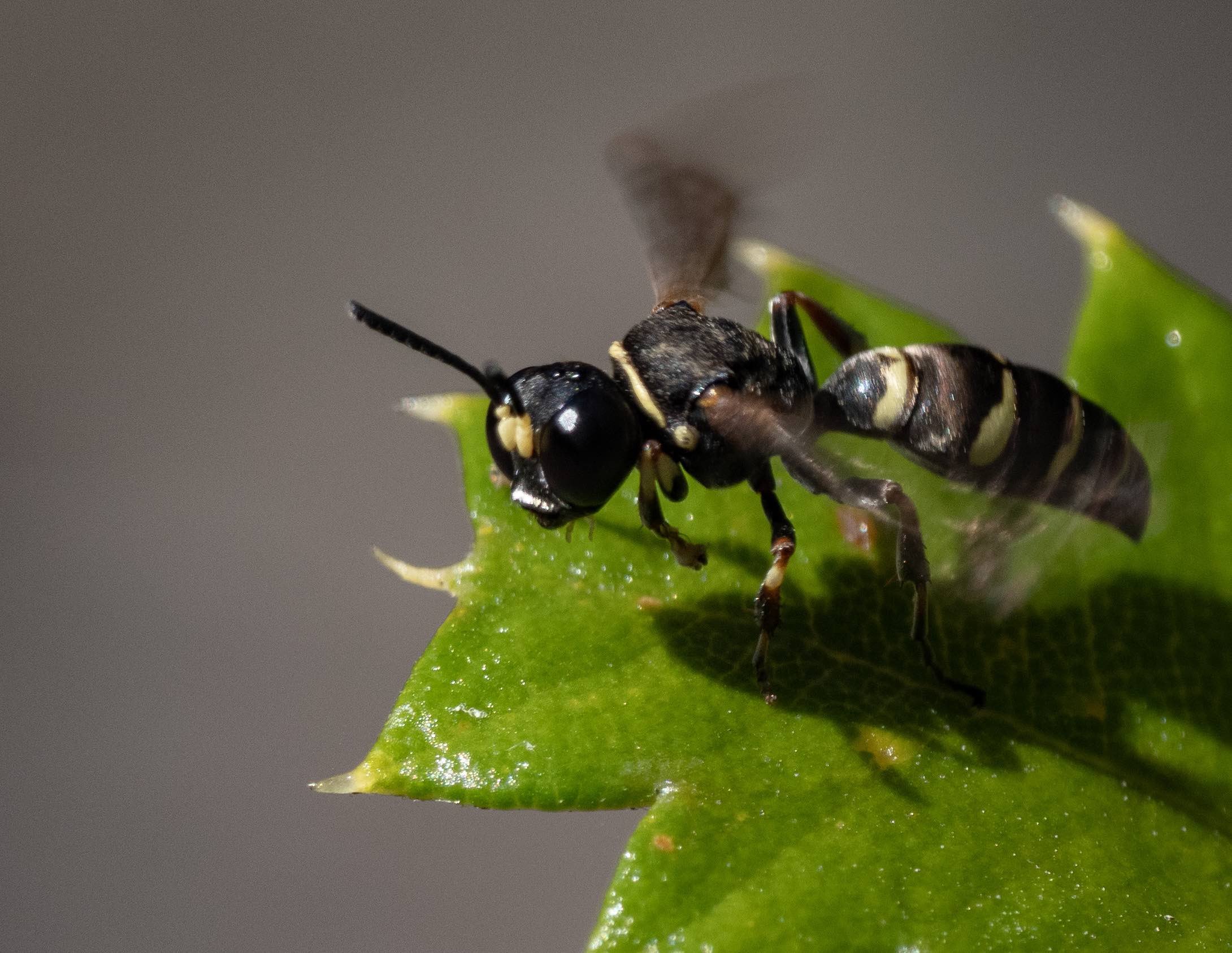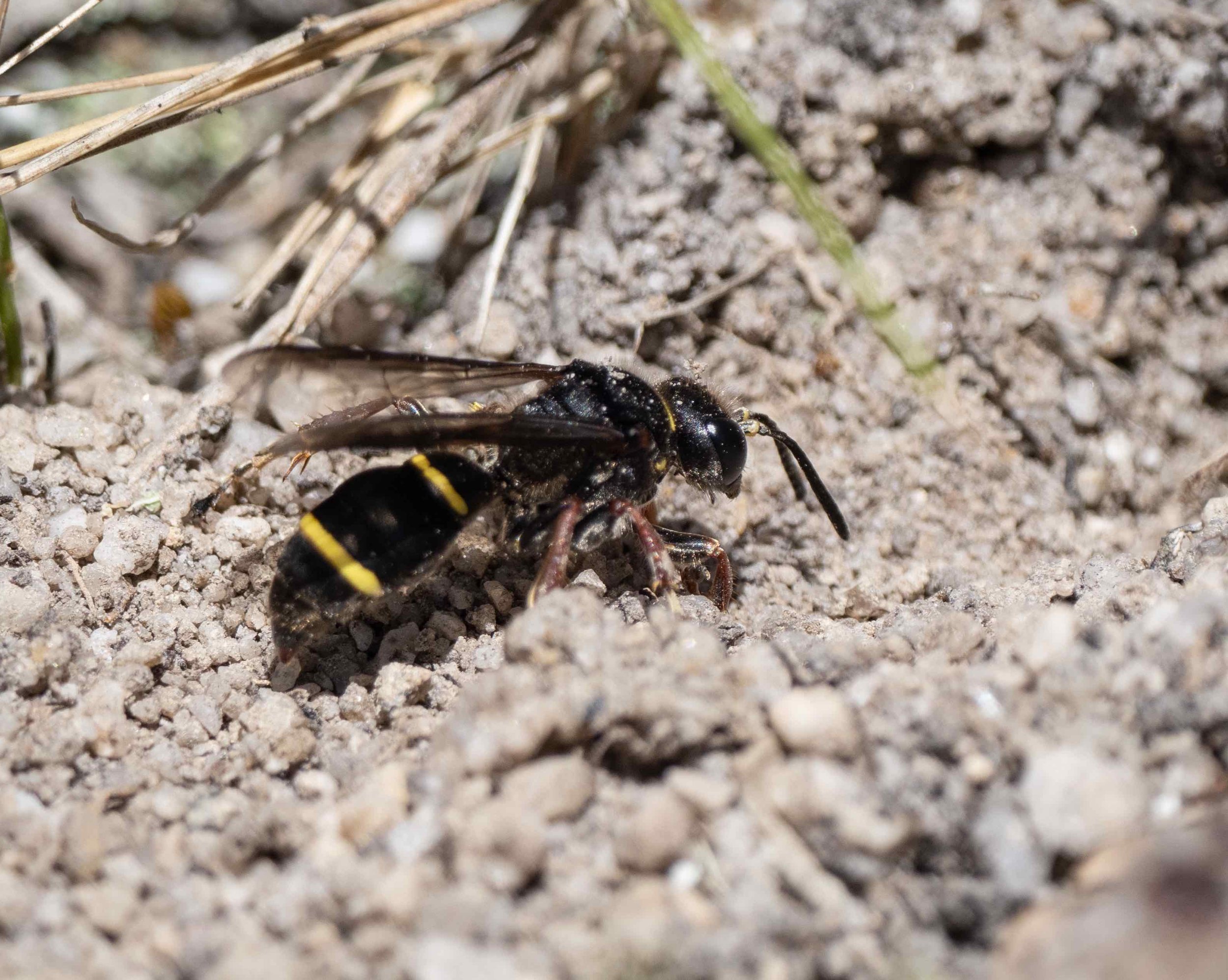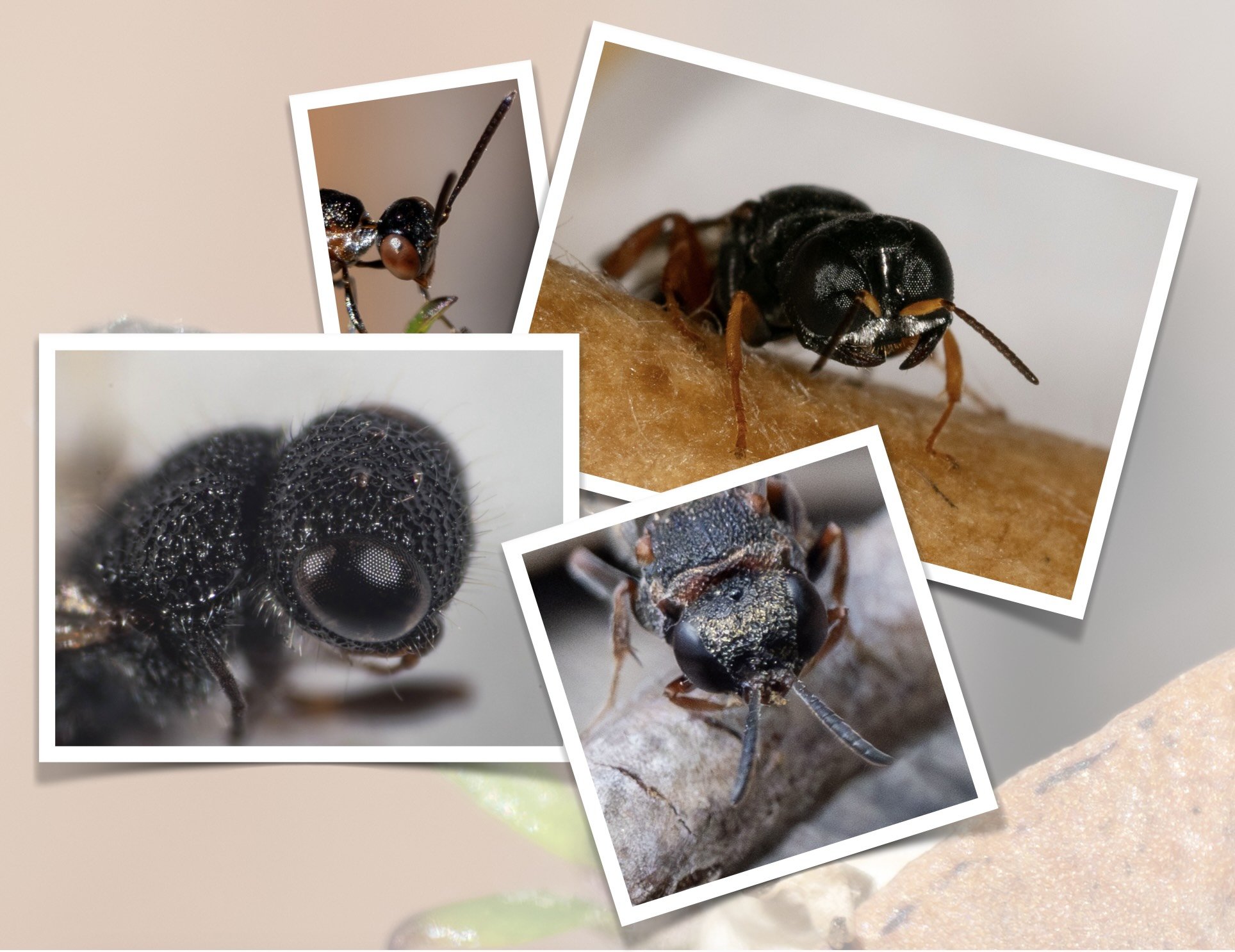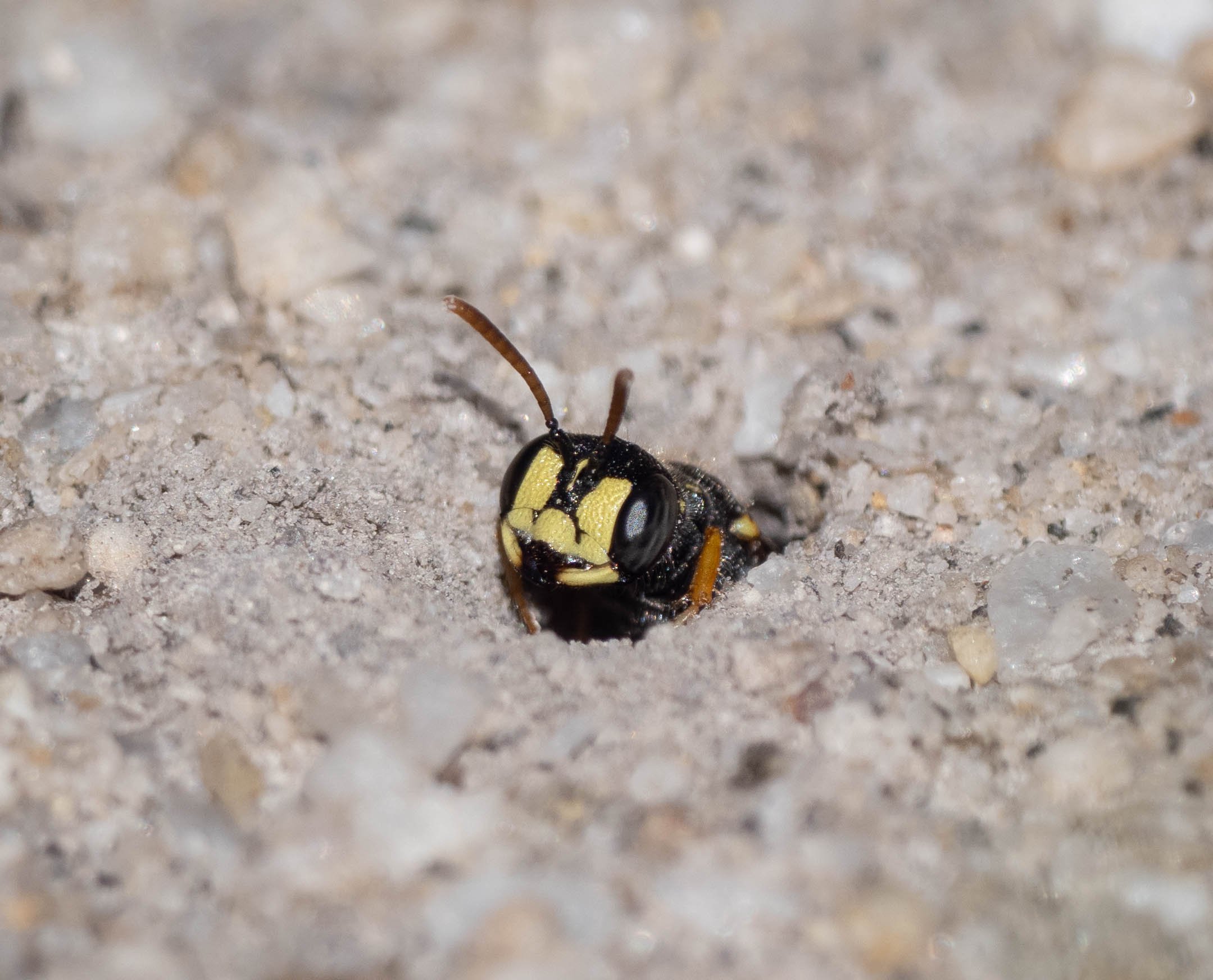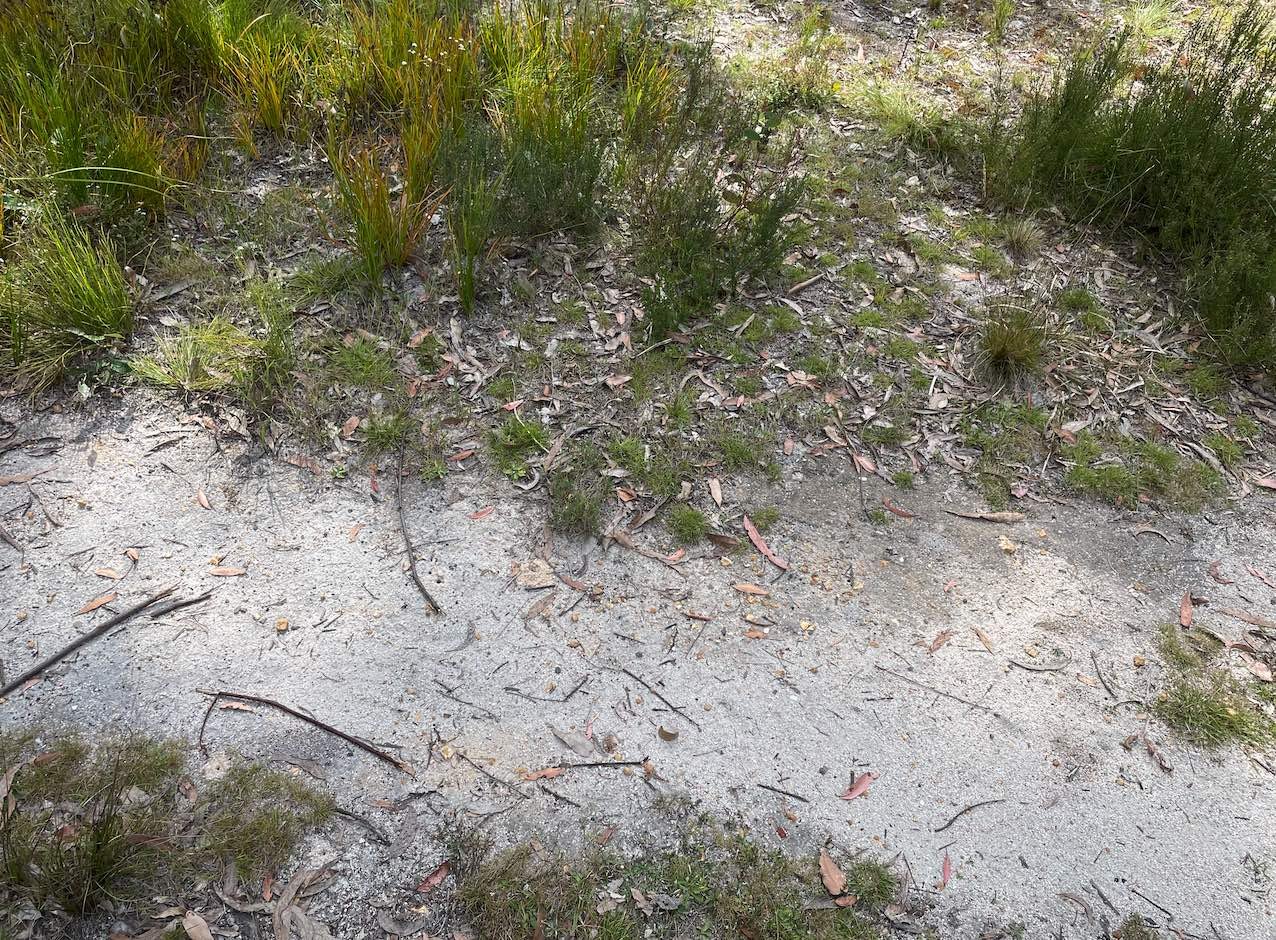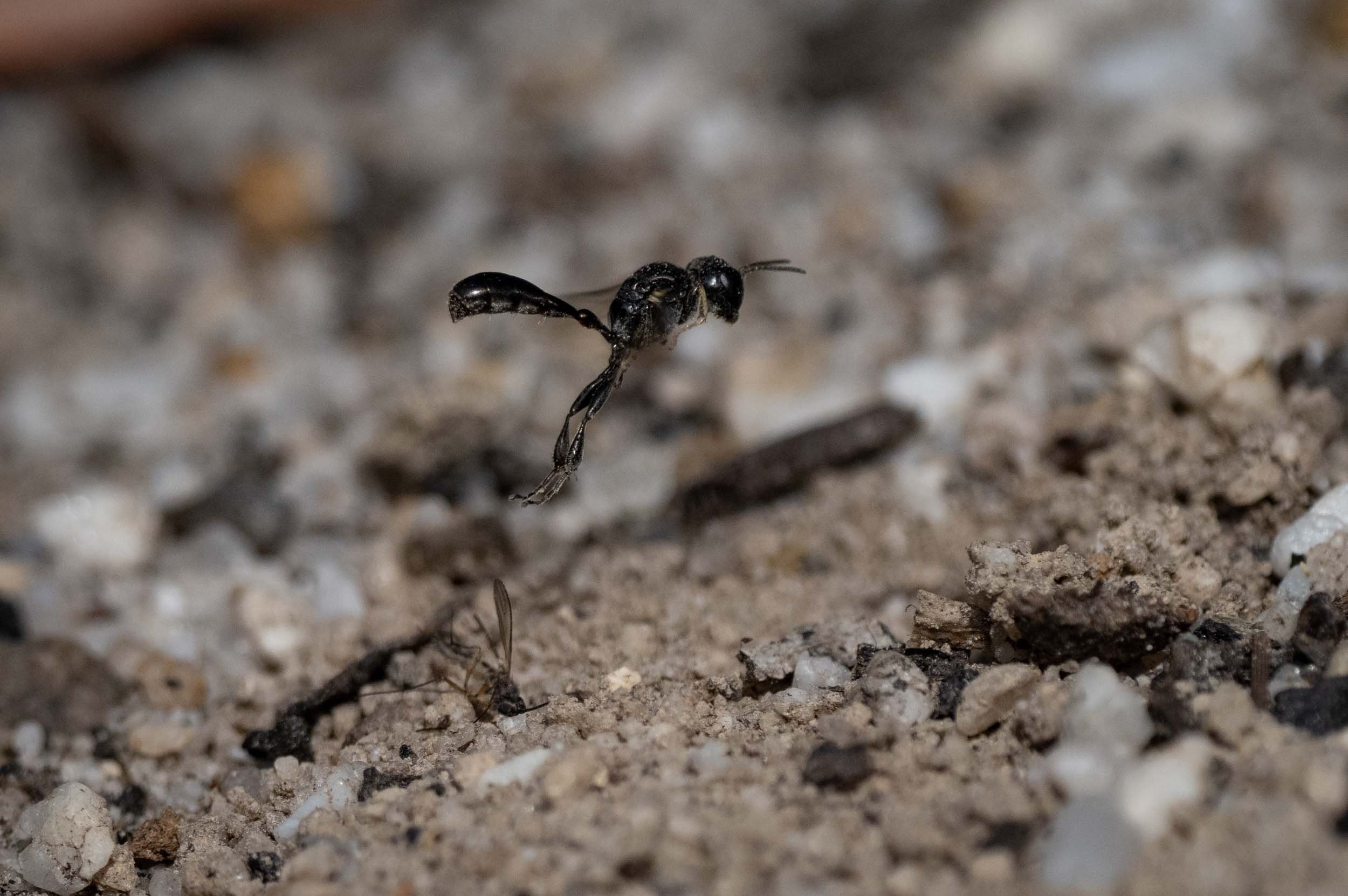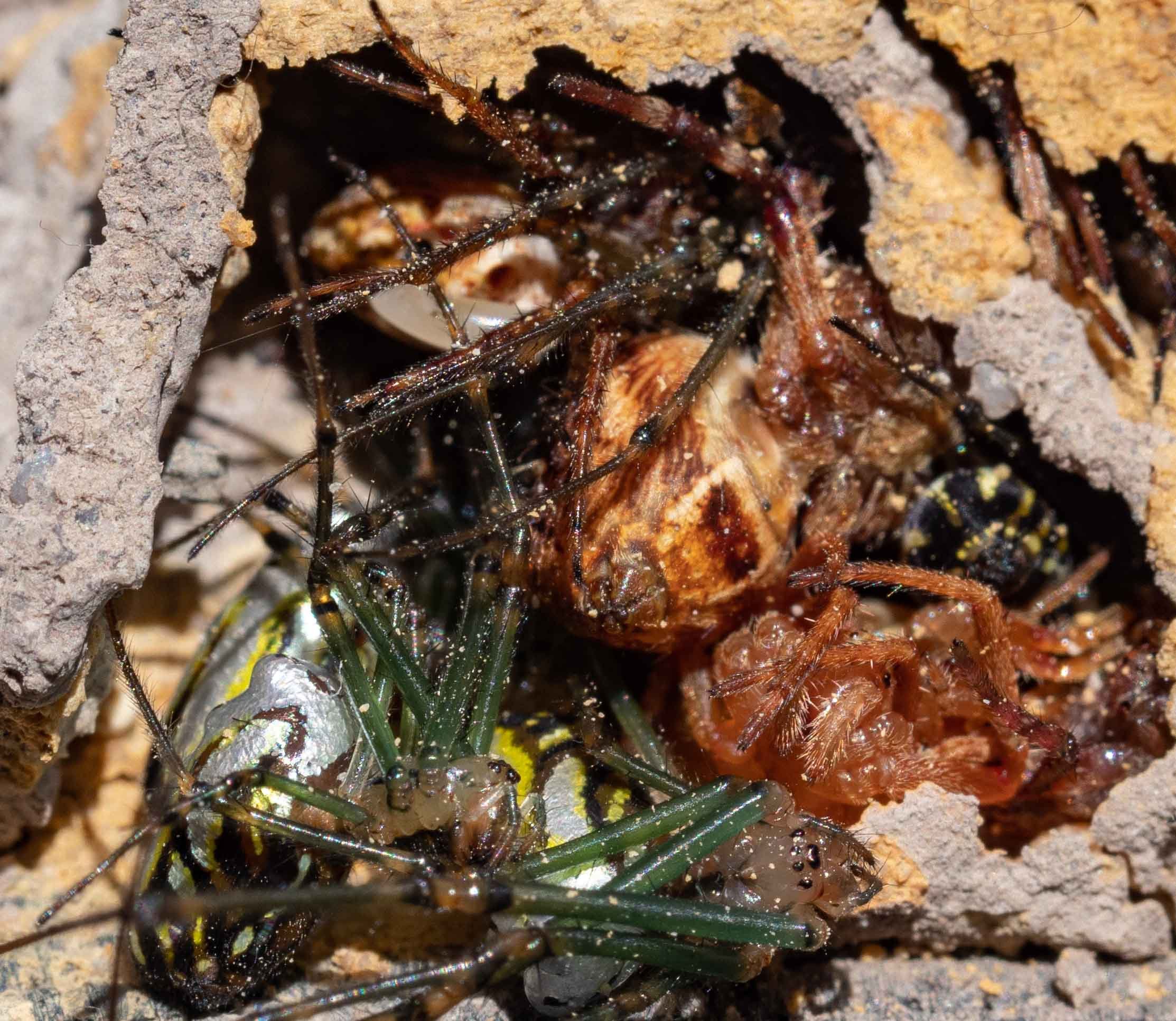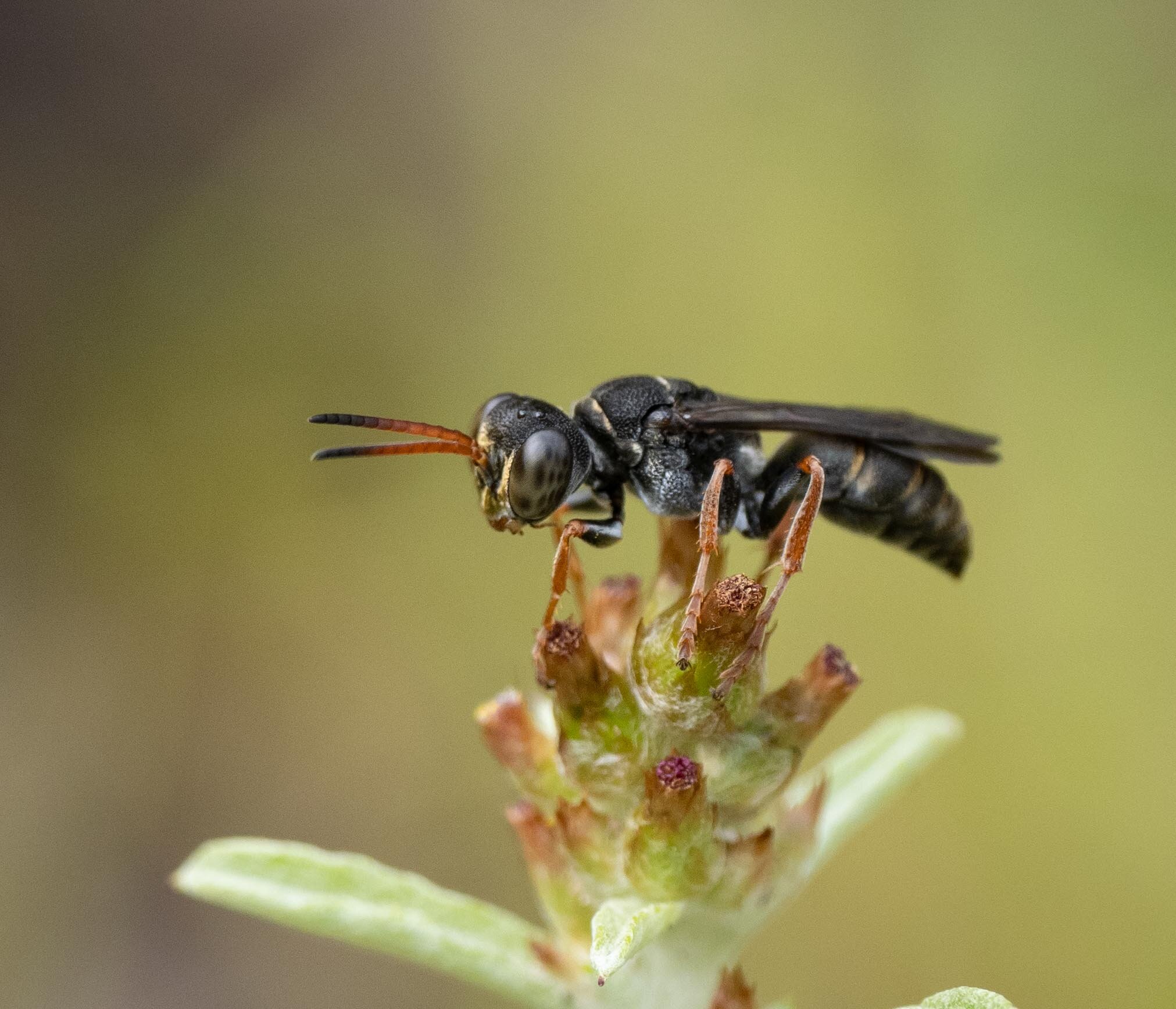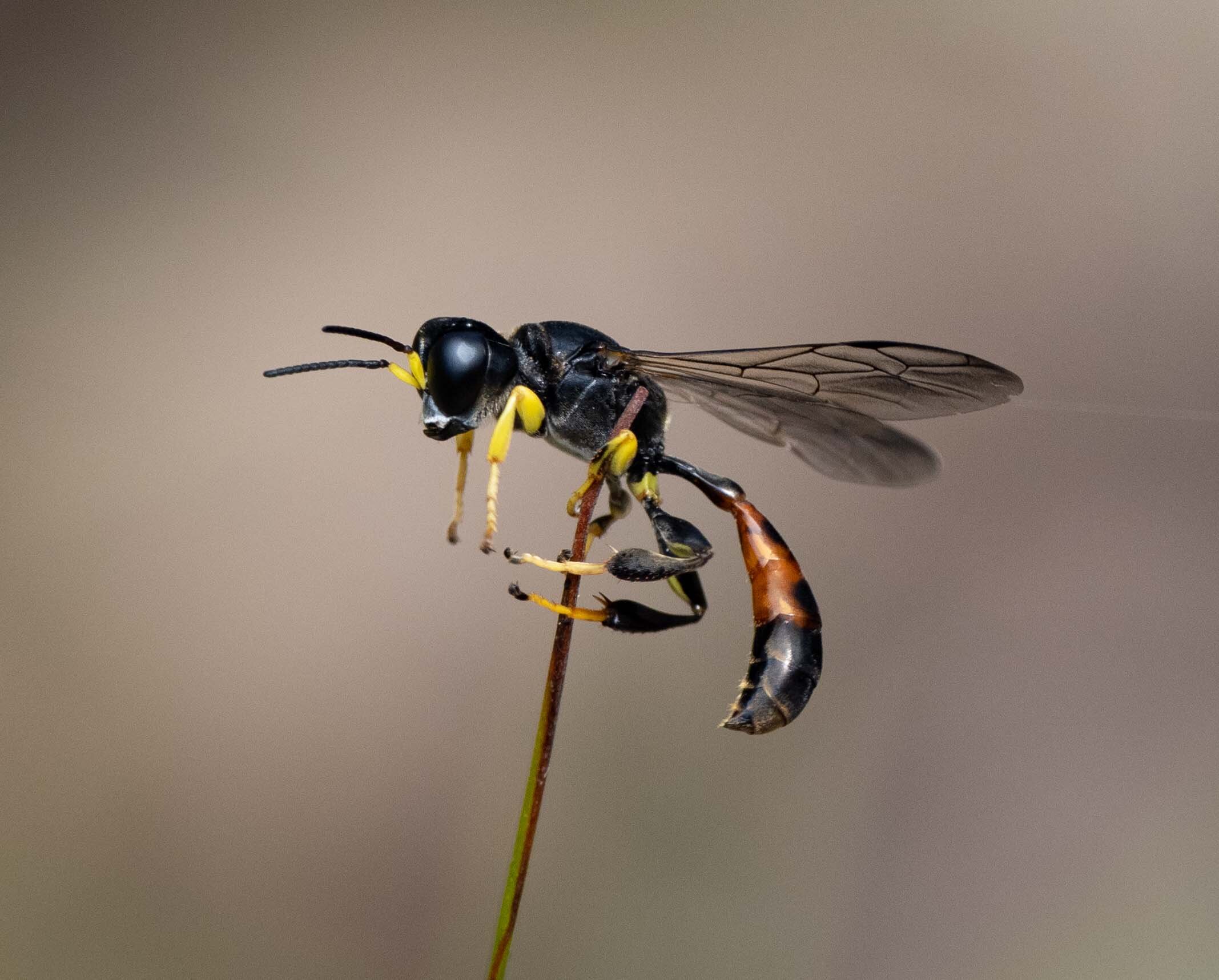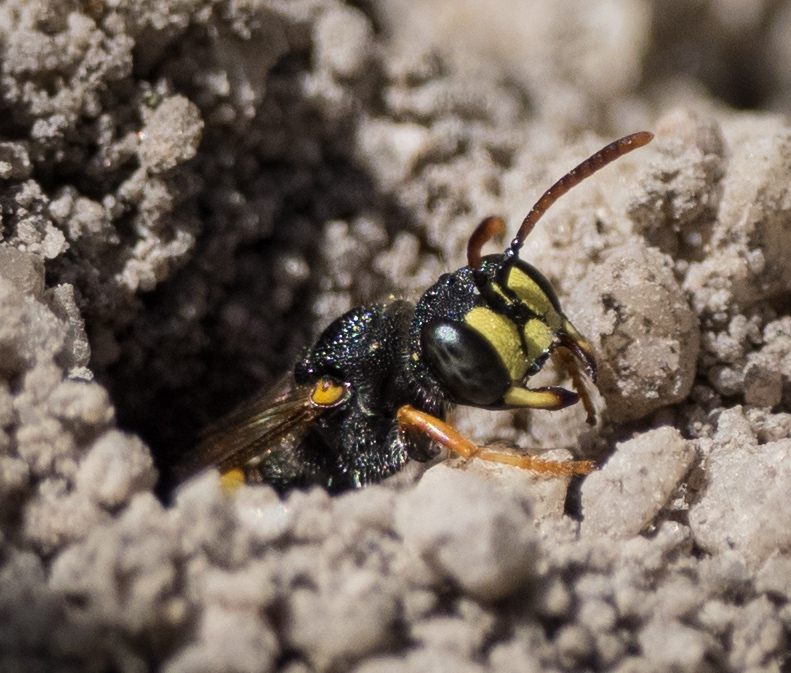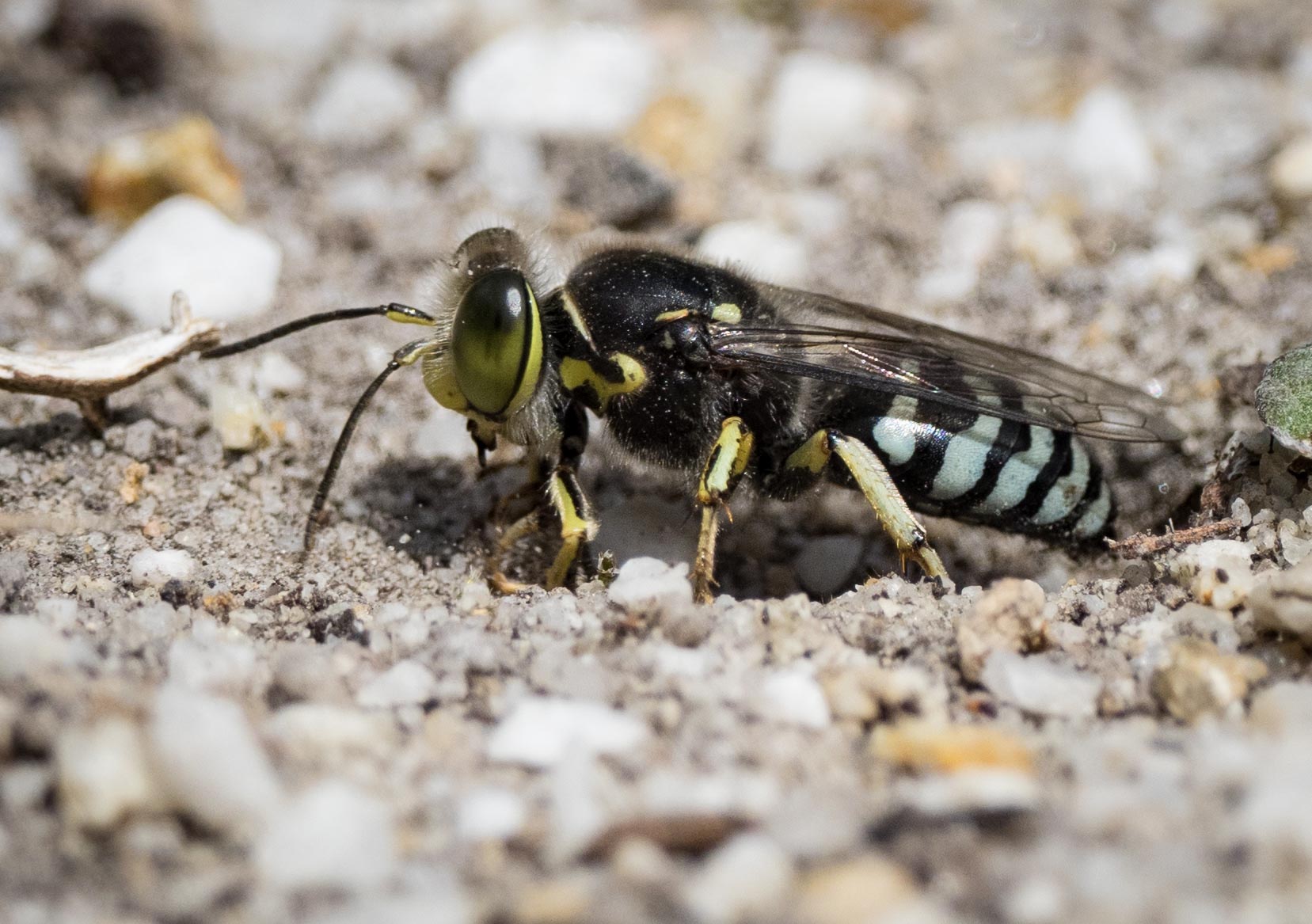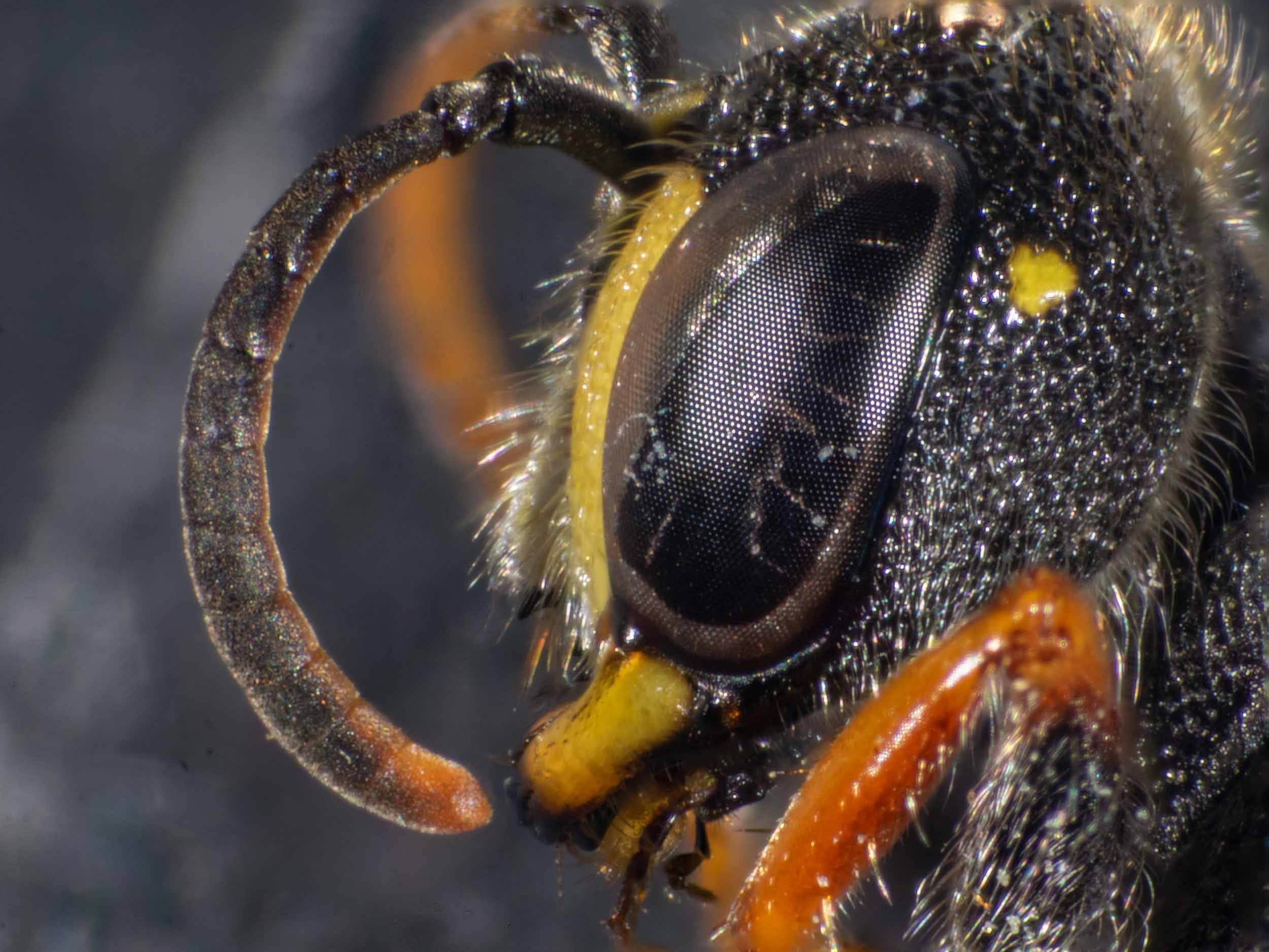
Over the past couple of years, I’ve been progressively building my knowledge of Australian Crabronidae … genus by genus. It’s an ongoing project and every time I tackle the identification of a new taxon I learn more about the group overall. This seems a good time to gather all the bits and pieces, and not simply as an aid to navigating the various workbook pages and related blog posts. I also need a single repository for the general resources that apply to the family as a whole.
Hence the ‘hub’.
Like all our workbook pages, these notes are a work in progress. Although developed simply for my own use, and no doubt imperfect, I’m happy to share these resources with anyone similarly absorbed by this charismatic group of wasps.
Where this all began
In the spring of 2022 I discovered a relatively large wasp nesting in the sand of the forest floor. That started me on a journey to learn more about Austrogorytes and related species. I quickly realised that I needed a conceptual map for differentiating the various crabronids … and I needed to understand more about their morphology too. For the story back then, see my January 2023 blog post Sand Wasp Puzzles: Part 1. There never was a Part 2. What I imagined at the time might be just a short series has turned into a complex network of notes and resources.
Comparing crabronid tribes
The following summary table (matrix) is a useful first step in distinguishing between Australia’s 46 plus crabronid genera. A combination of eye shape, ocelli form, and forewing venation is often enough for identification to tribe level. And then features such as the shape of the gaster and the position/shape of the antennae can reduce the list of candidates even further.
The summary table is best viewed as a pdf. Simply click image to open and/or download the latest version.
Tips on what to look for when identifying crabronids from field photos.
[extracted & adapted from much earlier blog post ‘Sand wasp puzzles: Part 1’]
To make sense of the summary table above requires some familiarity with the important body parts of these wasps. There are diagrams towards the bottom of this page (‘Morphology & terminology’ section), but those dive into rather technical details. As an entrée, the "Crabronid ID clues” page shows some of the key features … as they appear in field photos.
From tribe to genus
For the four most diverse tribes, I have put together more detailed notes on distinguishing the distinguishing the various genera.
Summary table for the 8 genera in the tribe Bembicini, with photographic examples of various key distinguishing features (plus other related material)
Summary table for the five Australian genera of Larrini, along with various references & diagrams.
Summary table for the eight Australian genera of Miscophini, along with various diagrams, images & references.
Notes on distinguishing between the 13 Australian genera of the tribe Crabronini, with a special mention on gaster shape.
From genus to species
I’m progressively adding to these pages, sometimes tacking a genus and all the known species within it (e.g. Bembix), at other times working up a detailed picture of an individual species (e.g. Bembix littoralis). Many of these pages include summary tables (matrices), and all will include reference to the relevant literature and any other useful resources I’ve found.
Arguably one of the most variable Bembix species in terms of colour pattern … and therefore one of the most challenging to identify from field photos. Finally I have one in the hand and so can be more confident that this is indeed B. littoralis.
Last summer I captured images of Pseudoturneria territorialis females, both in the field and upon collection. But at that time no males were to be seen. More luck this year, as in early November males are suddenly swarming about the nesting site.
This is a relatively common species throughout coastal and near-coastal Queensland. Thanks to Scott W. Gavins, I take a closer look at key identification features of the female … including the clypeal lamina and the mesopleuron.
Key features for distinguishing between the 48 described Cerceris species of eastern Australia.
Summary of Leclercq’s 2007 revision of this small genus, endemic to Australia. I was prompted to delve into this genus by an iNaturalist sighting from Victoria. Included is a summary table to features of the three described species of Chimiloides, and links to the relevant literature. Also, I detail my reasoning behind suggesting a species ID for the iNat sighting (Chimiloides doddii).
Summary of Evans’ & Matthews’ 1973 work on Australian Bembix, with a focus on the 44 species known from the eastern states. Included are extracts from the original monograph, such as the figures and key to all 80 species known at that time. The summary table is detailed (& rather cumbersome!), but necessarily so at this stage. The large number of species in the genus, and the high level of intraspecific variation, demand attention to multiple characters in order to make an ID.
A close look at our local Sphodrotes species … now confirmed as Sphodrotes punctuosa, the type species for the genus. In addition to the detailed evidence and logic behind my species ID, I’ve included brief biological observations and a small set of images.
Also included is a summary table for the 12 species of this endemic – and little known – Australian genus.
Pseudoturneria territorialis collected locally and imaged, including several live shots in the field. Annotated images illustrate the identification to tribe, then genus, and finally species. A summary table for distinguishing the 5 known species is provided, along with relevant references.
These may be the first such images available online … I certainly haven’t located any others as yet.
Summary table for the 31 species of Austrogorytes, a genus endemic to Australia.
Summary table for the three Australian species of Ammatomus, along with copies of the original species descriptions.
Summary table comparing the seven species of Australian Nitela and Auchenophorus, along with various diagrams and references.
The Bembicini genera Argogorytes and Austrogorytes are superficially similar. Here's a definitive comparison for two WA species that I have previously struggled to differentiate from written descriptions alone.
(cover image: Kerry Stuart, iNaturalist sighting
https://inaturalist.ala.org.au/observations/235308189
Comparing the 14 Australian species within these three, very similar genera.
Published descriptions of Australia’s two species: P. interstitialis lutescens (Turner, 1907) and P. carinifrons scutellatus (Turner, 1912) … with links back to iNaturalist sightings.
Exploring published descriptions of Australia’s Dasyproctus and Neodasyproctus species – there are just six currently described, but discriminating between them is an ongoing challenge.
Matrix for the subfamily, illustrated with specimen 2406A
Identification of our local Cerceris, based on Evans 1981 review of species from eastern Australia.
Identification notes based on collected specimen
Identification notes based on collected specimen
[cover image a different individual: imaged nearby, 16/11/22]
Biology, ecology, and discovery blog posts
Links to crabronid-related blog posts from the main part of our website. Most describe our observations of nesting behaviour, with interpretation based on the literature.
“What did you do with your summer holidays Kerri-Lee?”
Well, let me tell you all about it! I broadened my home range and met several new faces … and some rather special ones at that!
Includes accounts of: Acanothostethus (Crabronidae: Nyssonini); Pseudoturneria (Crabronidae: Crabronini; Megalyra (Megalyridae); and Pseudofoenus (Gasteruptiidae)
My winter wasp research projects take a twist when I discover several unfamiliar species ... in the house!
Like most Crabronids, Cerceris are solitary wasps. Intriguingly, however, a few species display behaviours reminiscent of social insects. Our local species, Cerceris antipodes, is one such. I delve into the research literature to learn more about their nesting habits.
An unfamiliar sand wasp leads me to investigate Crabronidae … and develop tools I can apply to related puzzles in the future.
One small patch of sandy ground, so many ground-nesting insects! Seven species of crabronid, three bees, velvet ants … and more.
We discover a tiny, sand-nesting wasp and record unique photos and observations of a rarely seen crabronid … Rhopalum coriolum.
Paralysed spiders, greedy mud-wasp larvae, and the most beautiful parasites imaginable! All packed inside little mud houses.
Includes: Pison (Crabronidae: Trypoxylini) and Aglaotilla (Mutillidae: Dasymutillini)
A detailed look at the nesting behaviour and identification of two more Crabronidae, Sphodrotes and Austrogorytes – with a Bembix and Cerceris thrown in, for good measure.
Podagritus is a genus in the family Crabronidae. It’s a wasp I’ve never seen before and their nesting behaviour has been fascinating me for weeks.
The few glimpses we get of life below ground is a reminder of how much is taking place beneath our feet.
Includes: Bembix (Crabronidae: Bembicini); Cerceris (Crabronidae: Philanthinae)
Congregations of burrowing wasps are distracting me from my pursuit of native bees ... for now, at least.
Some of my earliest (and rather naive) observations of Bembix furcata (Crabronidae: Bembicini)
Morphology & terminology
Notes that can help make sense of the various terms used in descriptions of crabronid morphology. Different authors adopt different nomenclature, and even individual authors will change the terms they use over time. It can be confusing!!

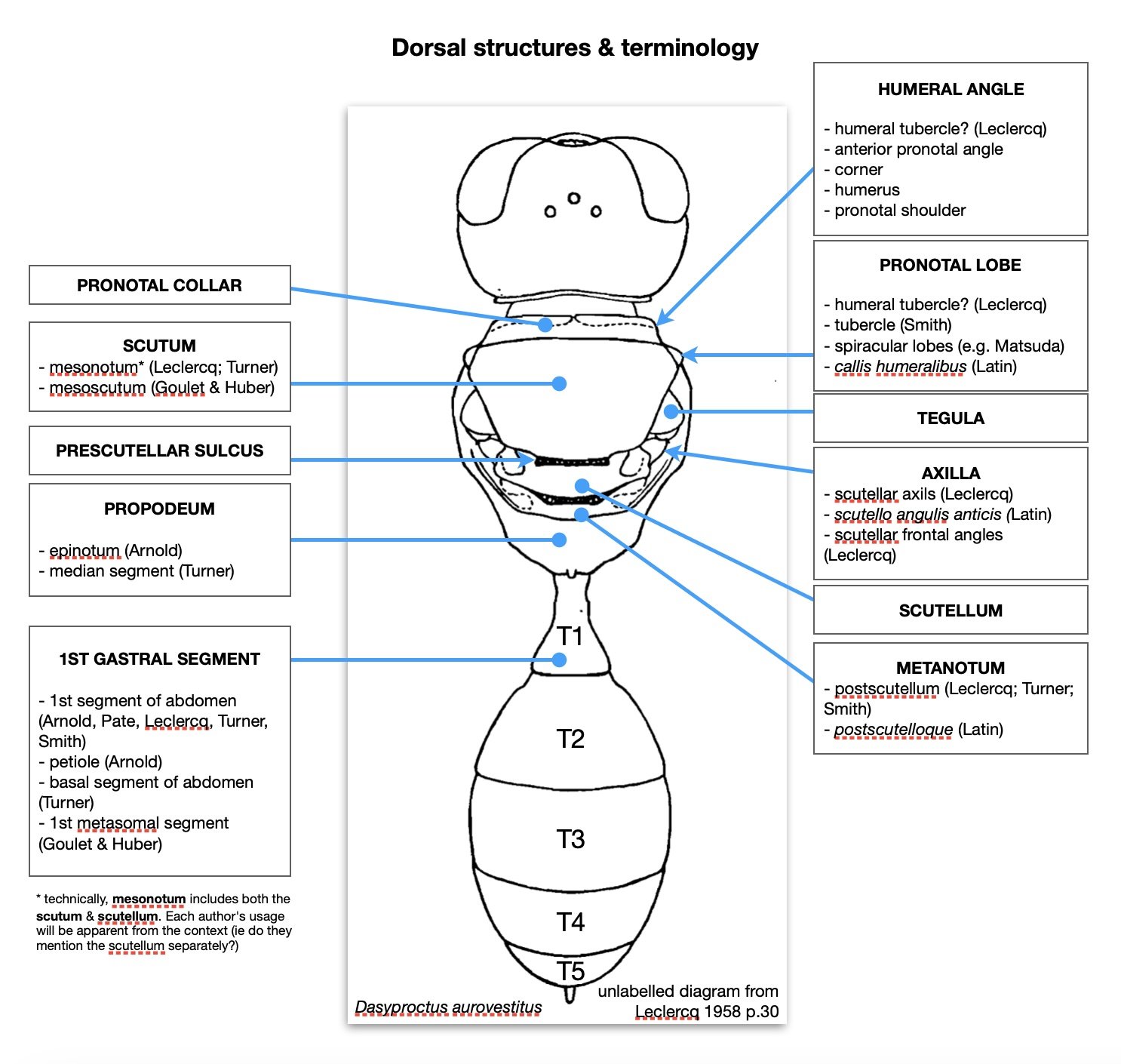
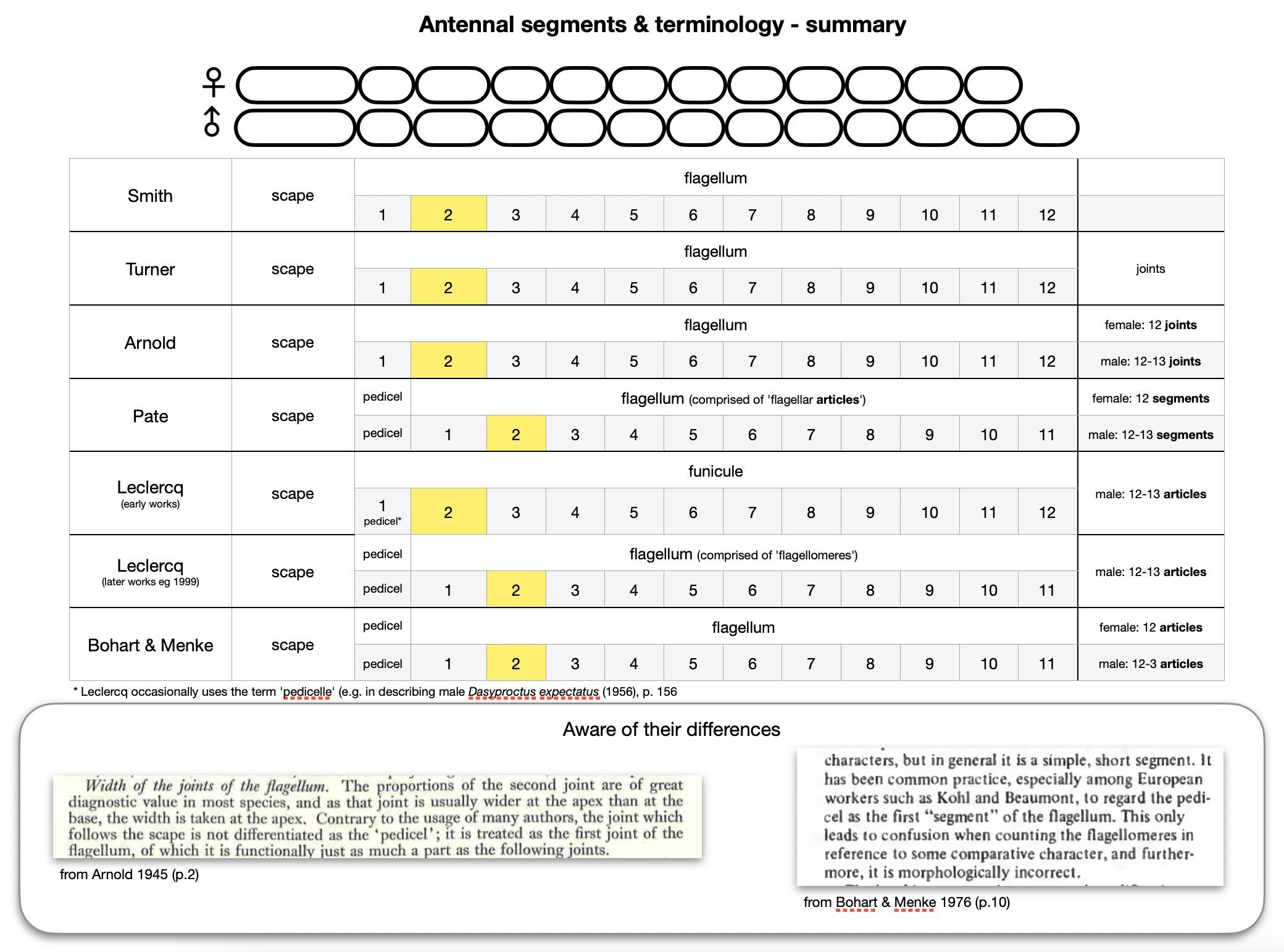
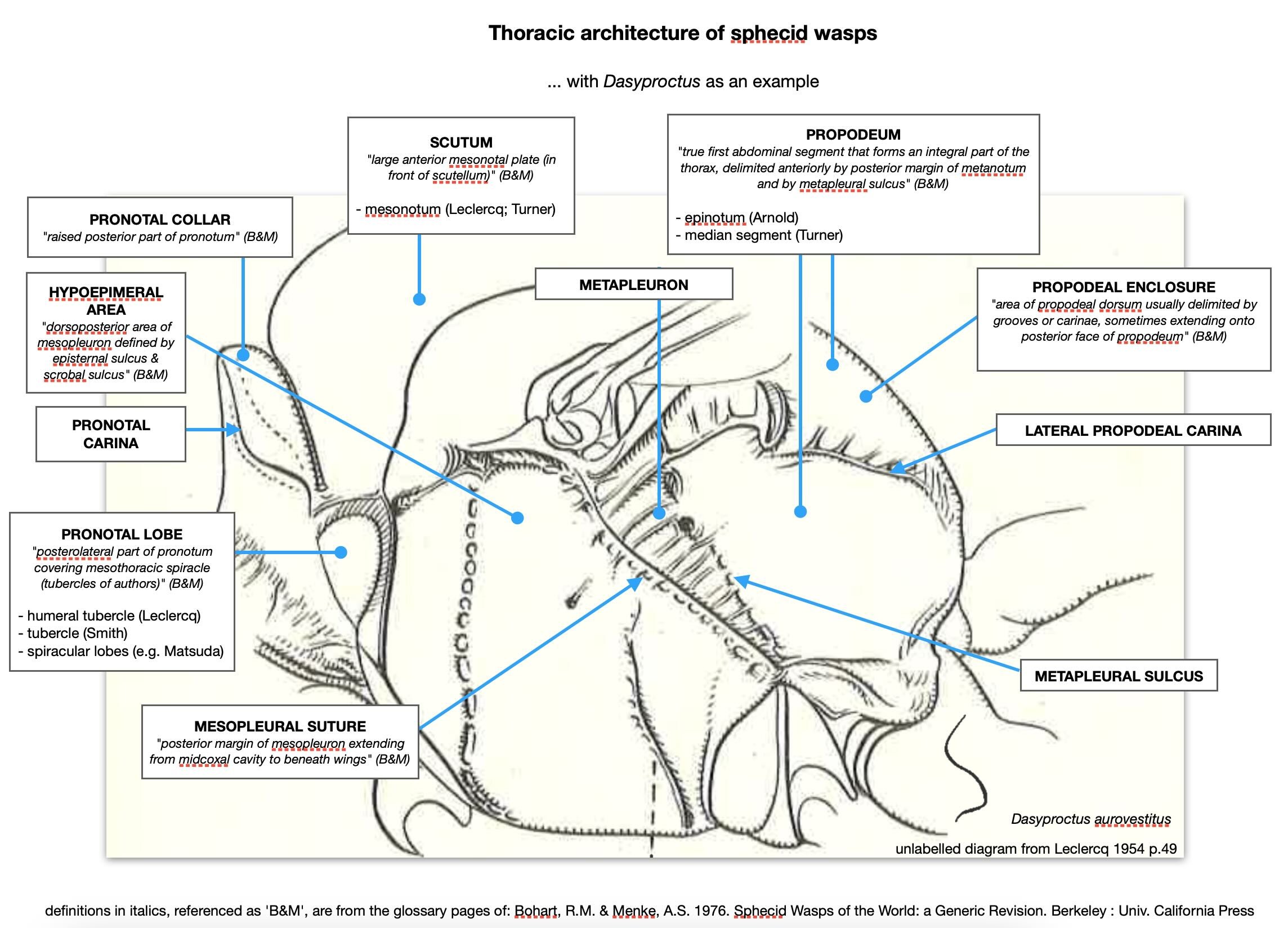

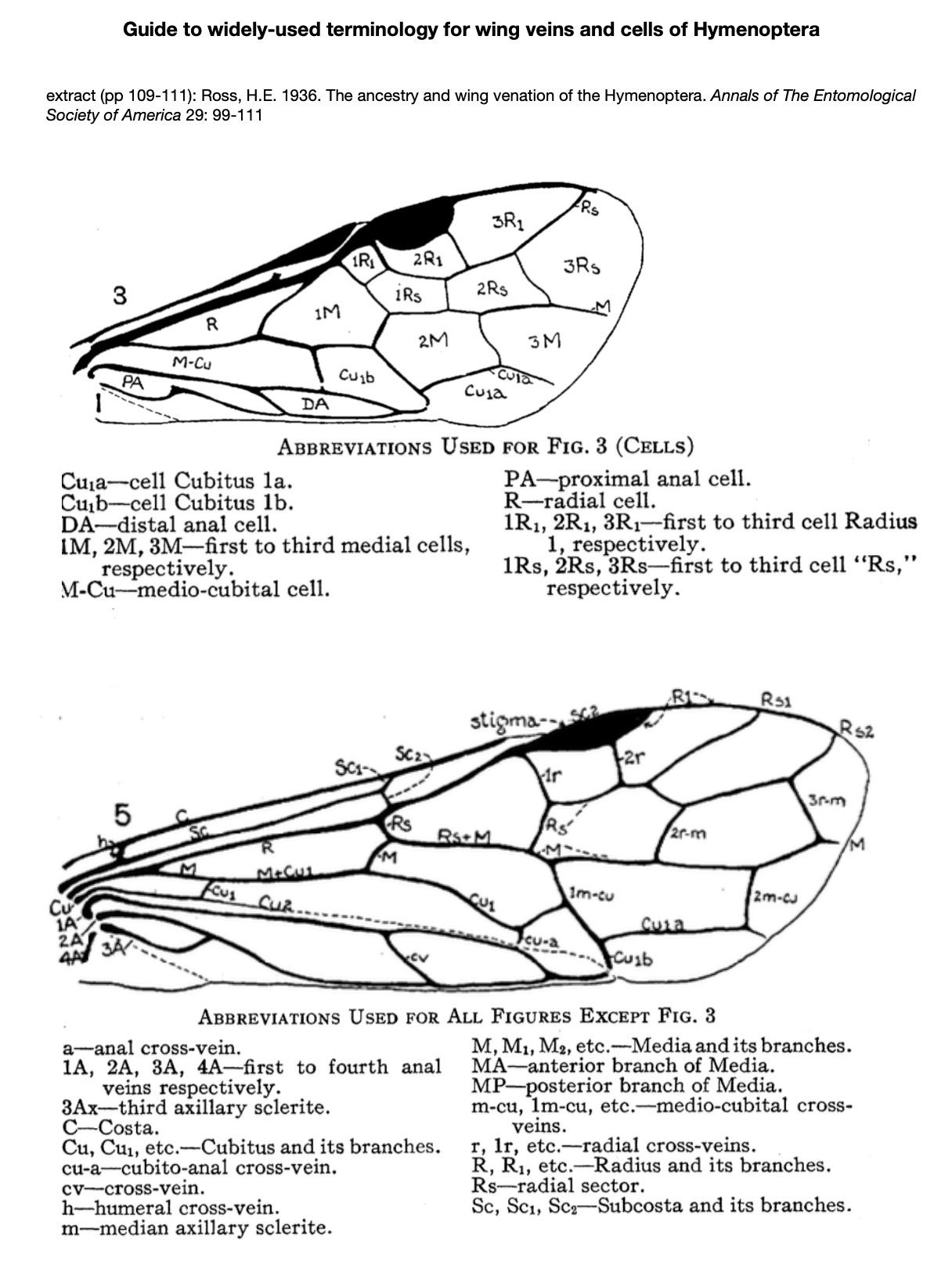

Taxonomies also change over time
It is not uncommon for taxa to be elevated or demoted, depending upon our collective knowledge and the preferences of particular authors. One side-effect of this is the challenge it poses the reader when dipping in and out of references that employ different systems. For example, the Crabroninae of today encompass both the Crabroninae and Larrinae of Bohart & Menke (1976). The following table helps me keep track.
Sphecid Wasps of the World – a must have publication
Much of what I need to know to discriminate between Australia’s 46 genera is available in a single publication … thanks to the mammoth efforts of Bohart & Menke (1976)! This remarkable treatise – all 695 pages of it – is among the references I most value. Lately I’ve been using the introductory chapters to untangle the complexities of thoracic morphology and the plethora of different terms employed by different authors.
see Wikispecies page for access
Bohart, R.M. & Menke, A.S. 1976. Sphecid Wasps of the World: A generic revision. University of California Press, Berkeley … available for access or download from Internet Archive


